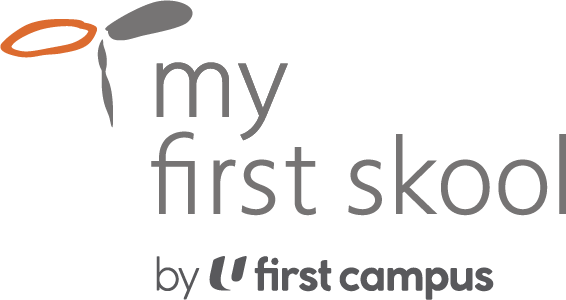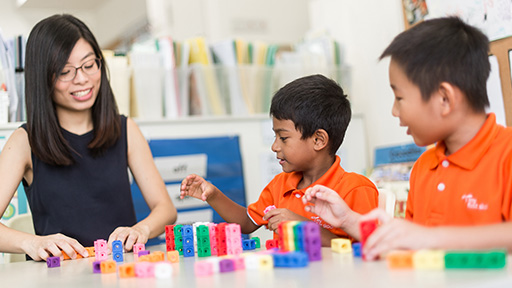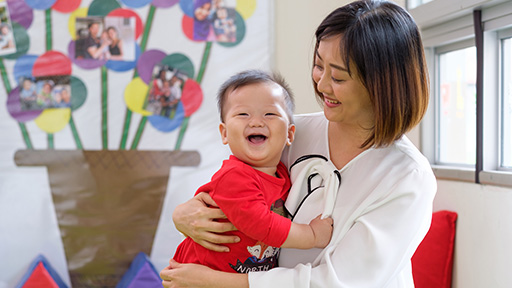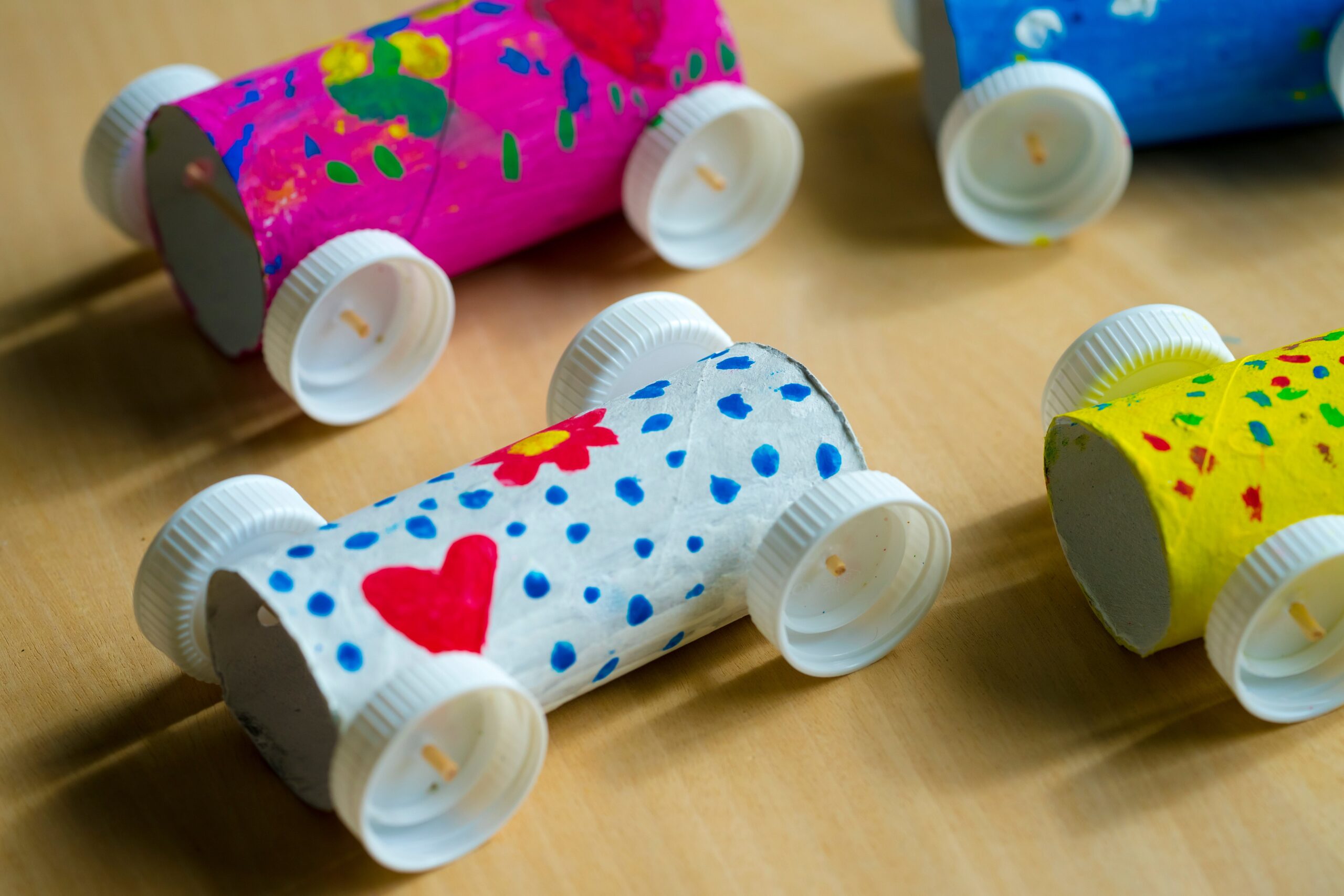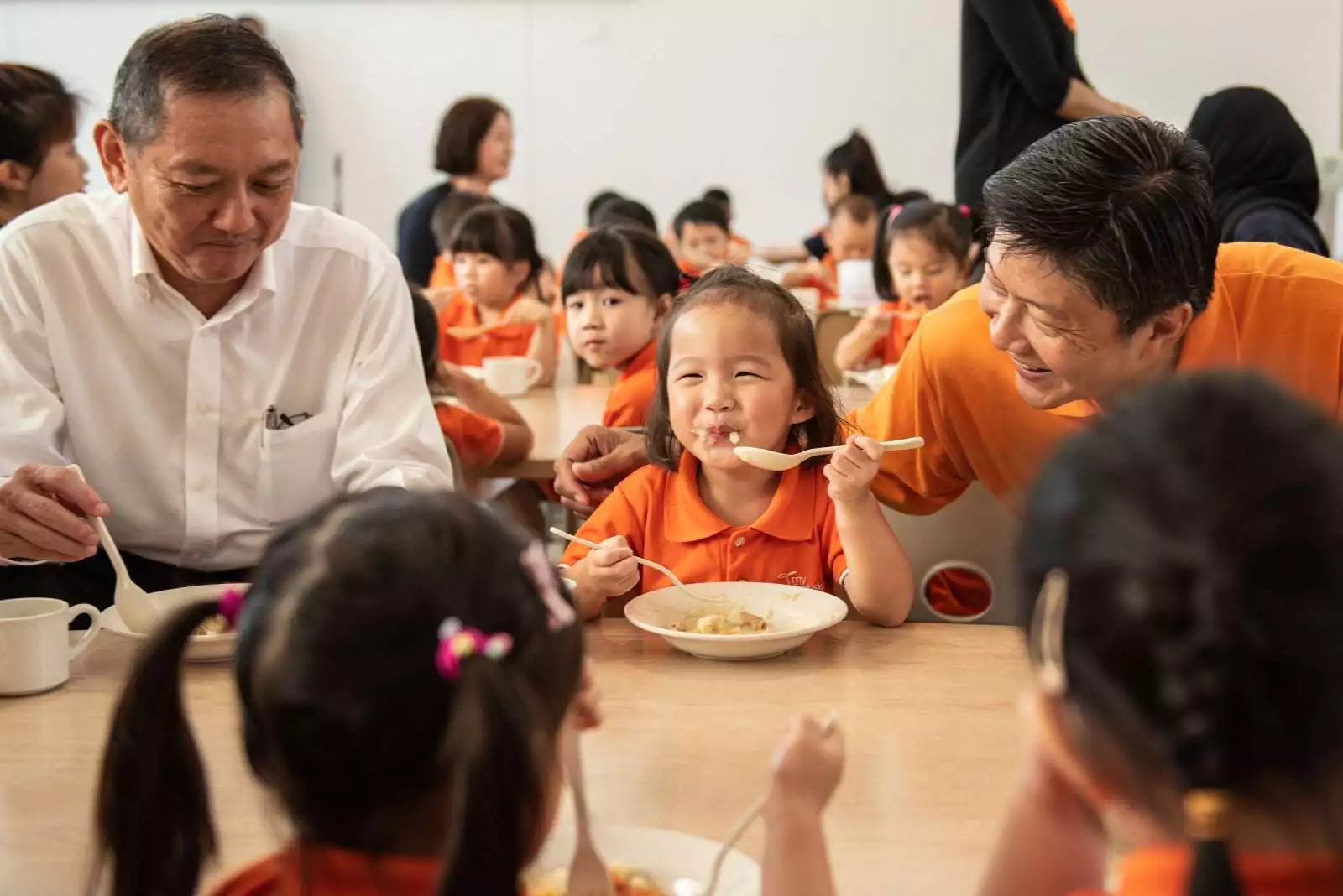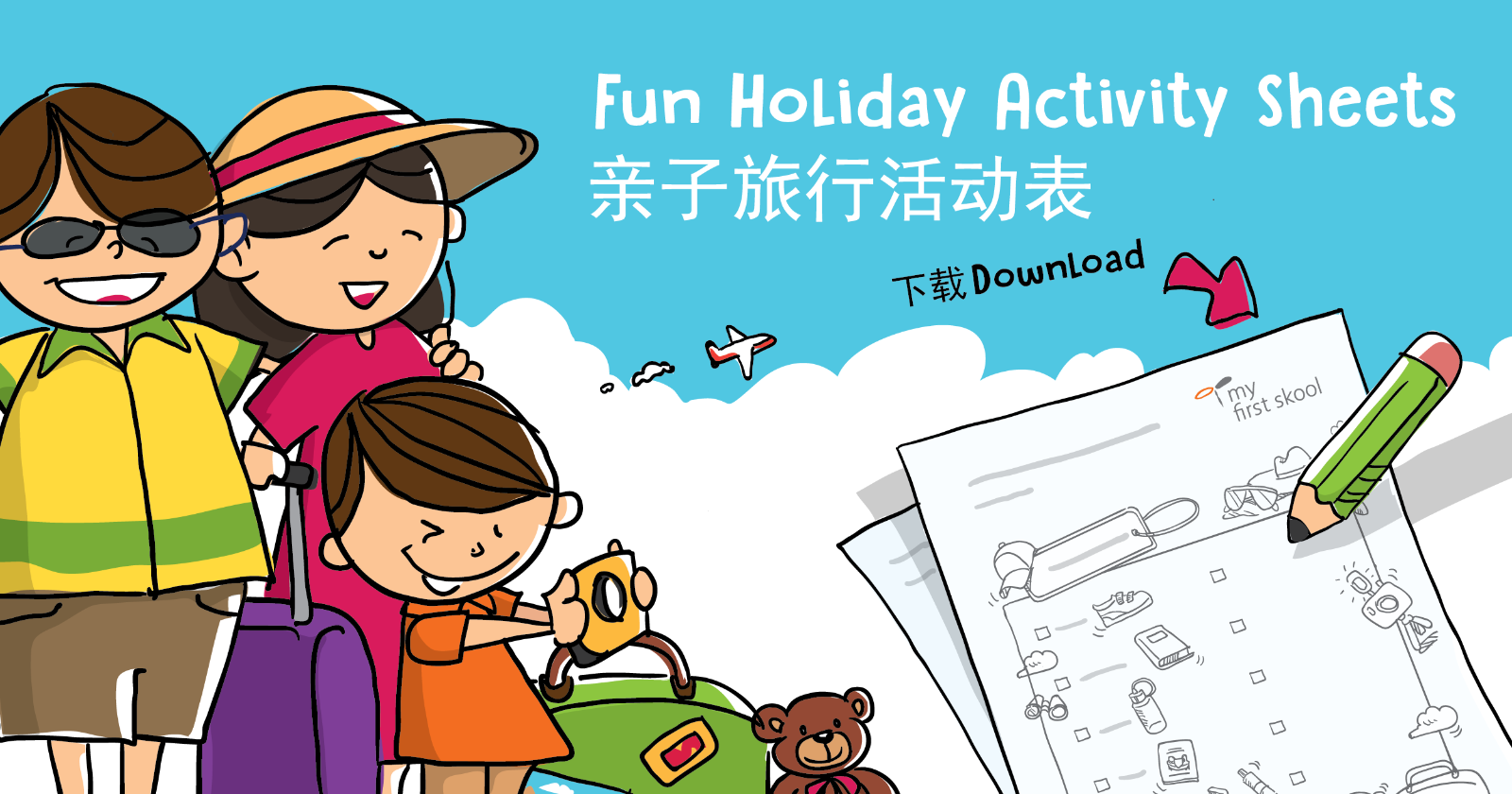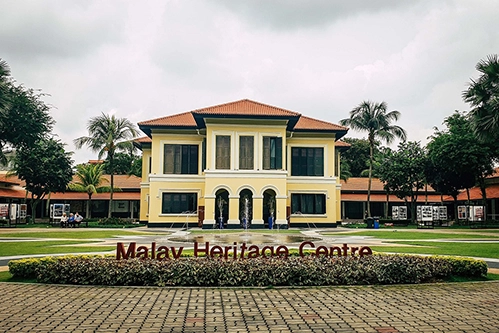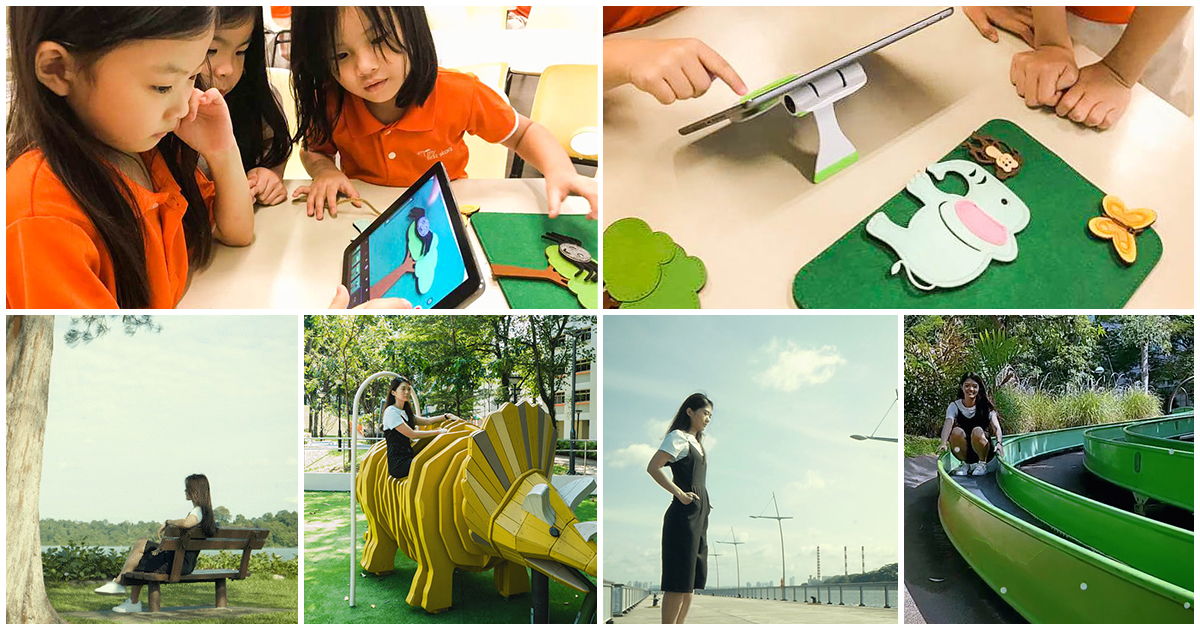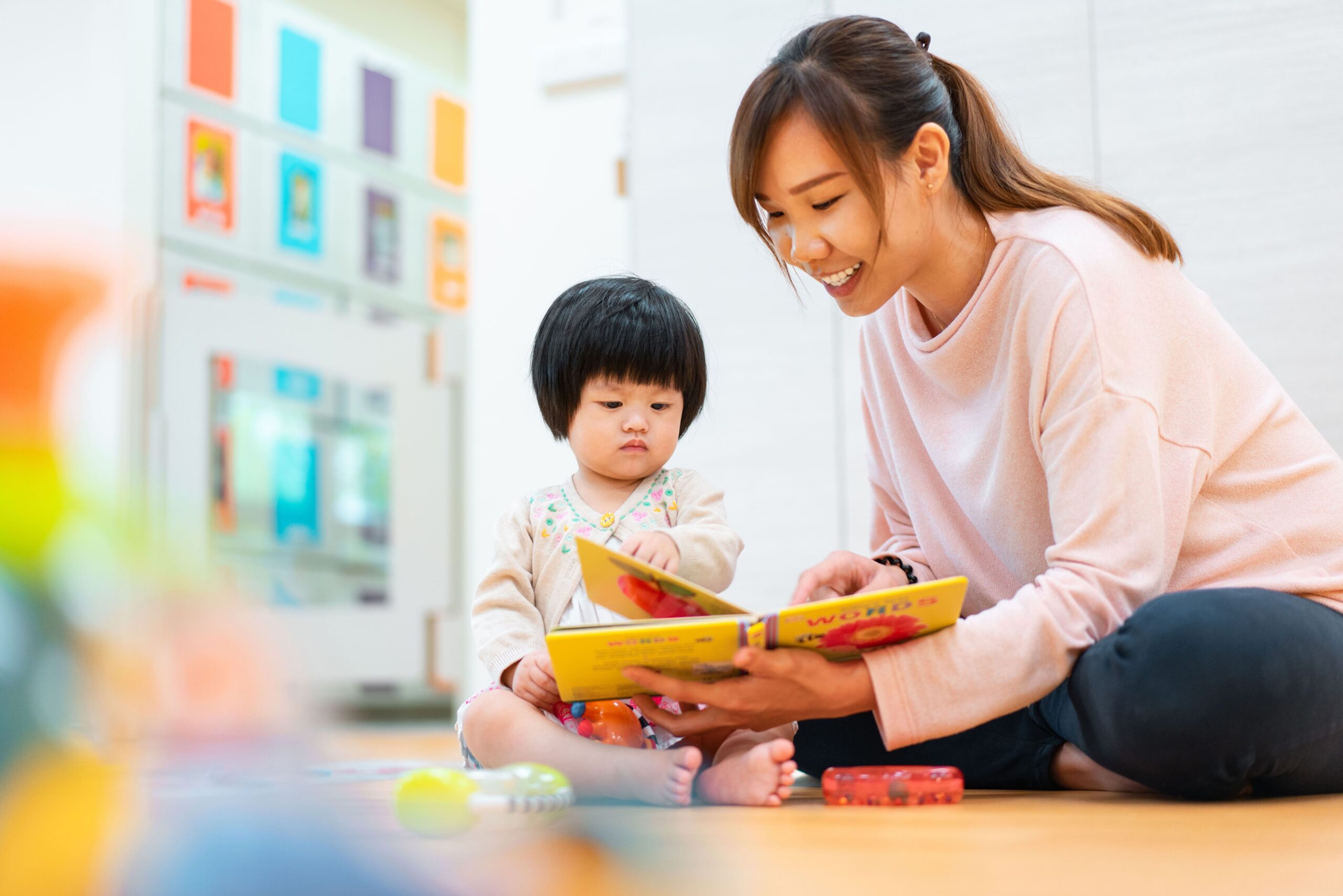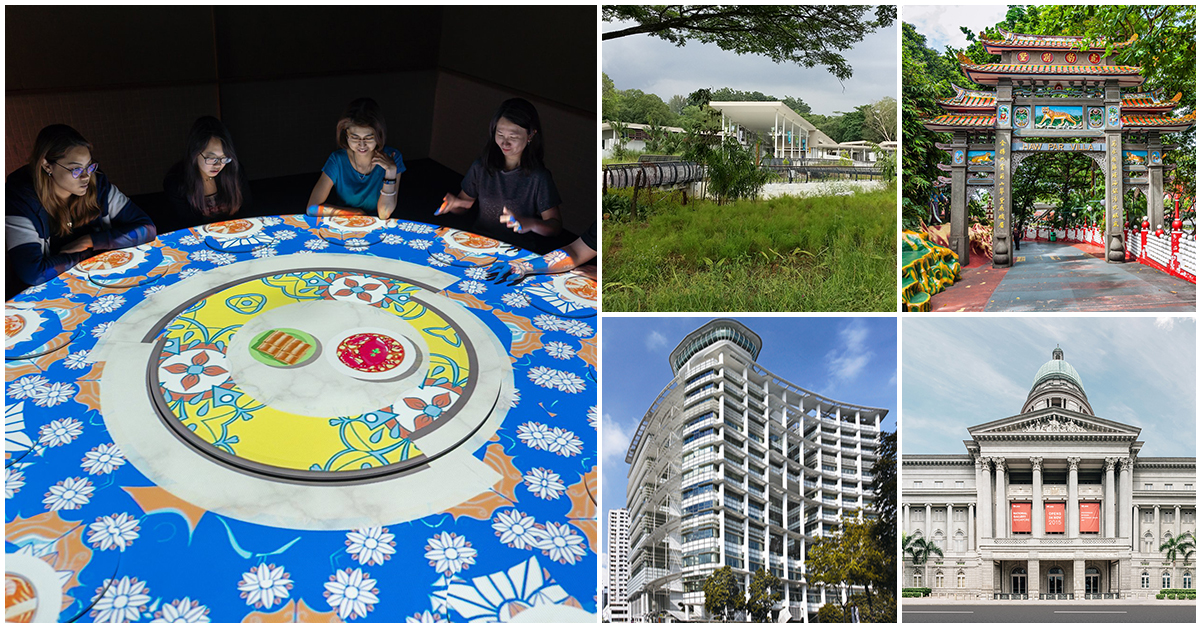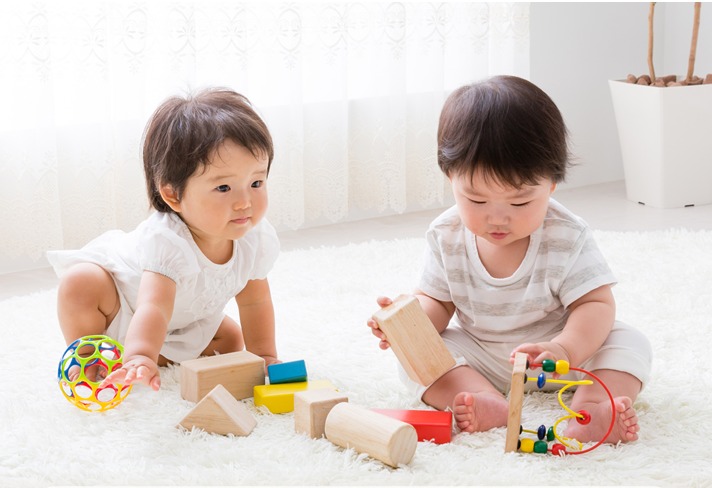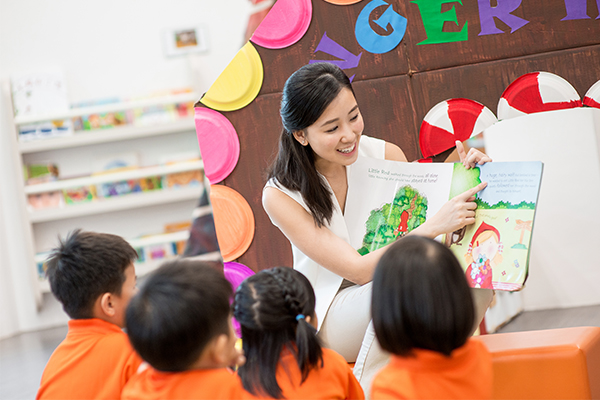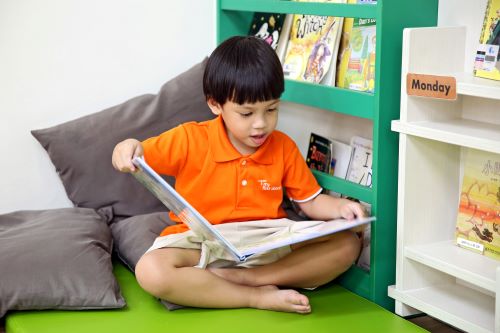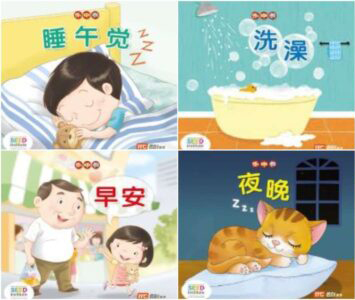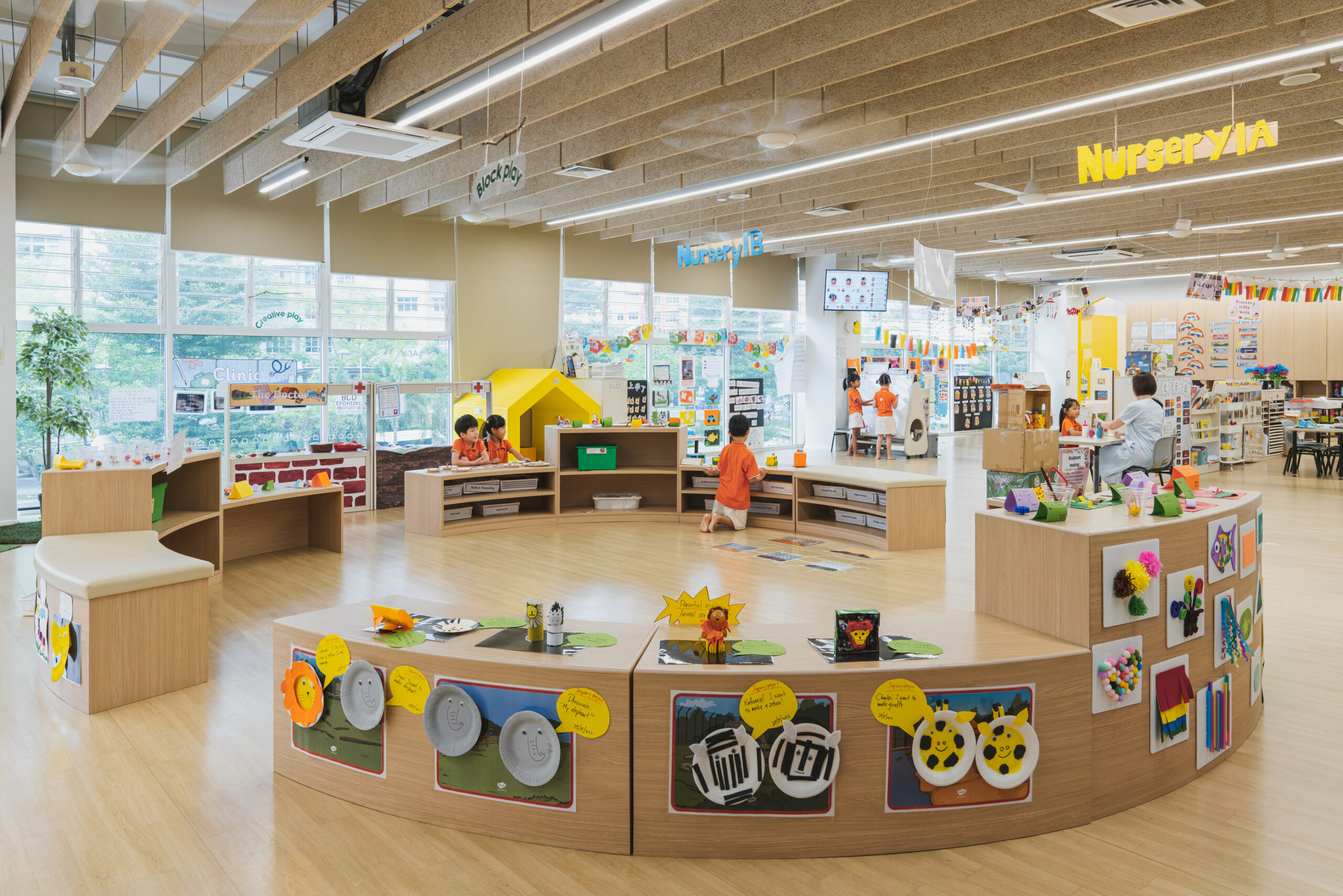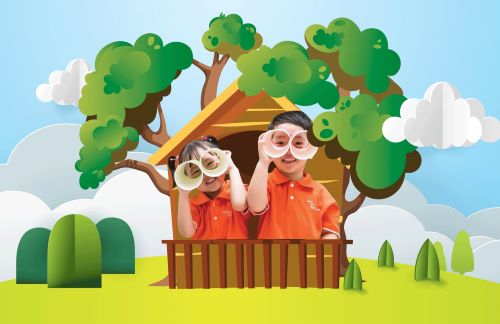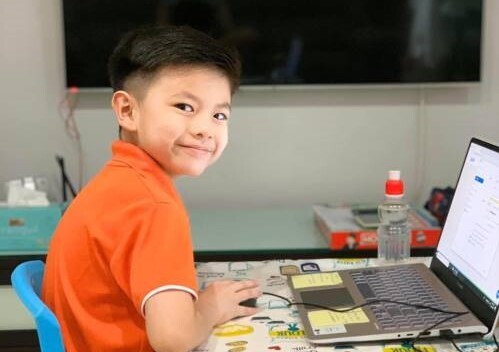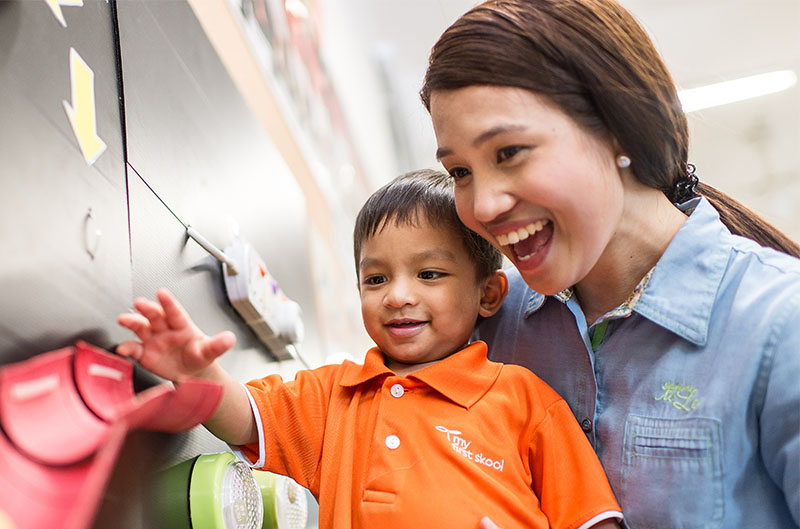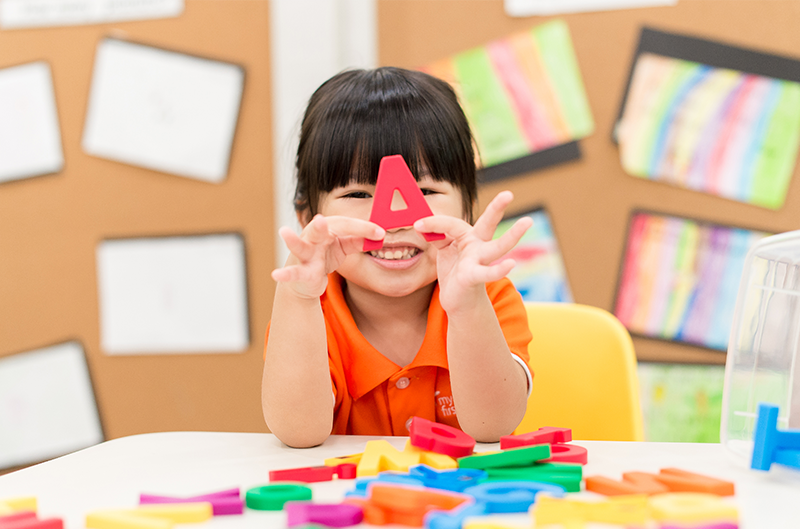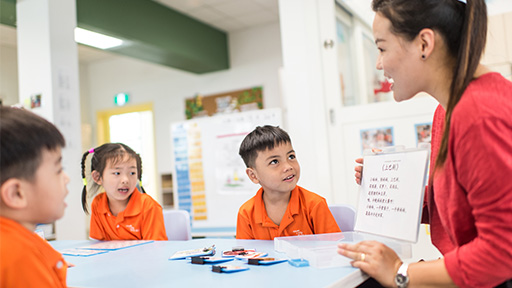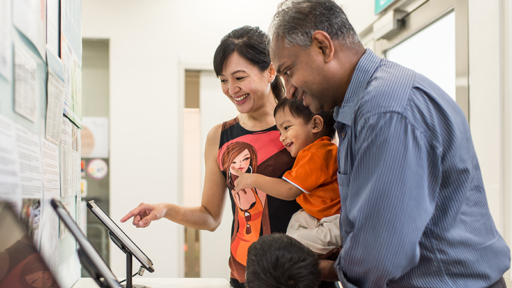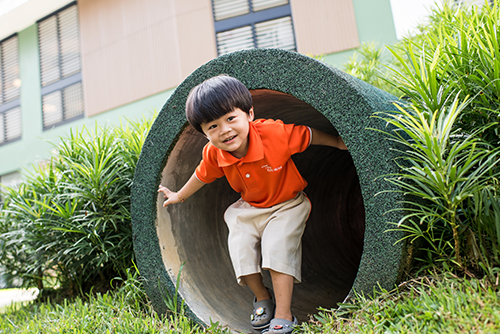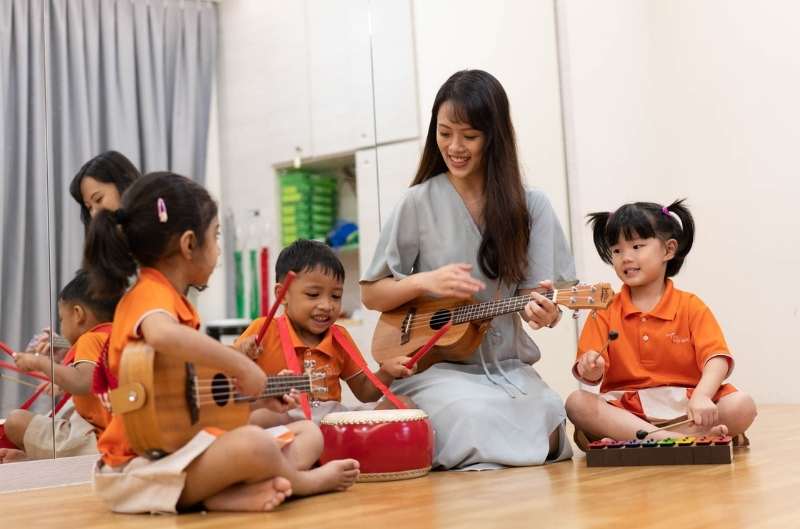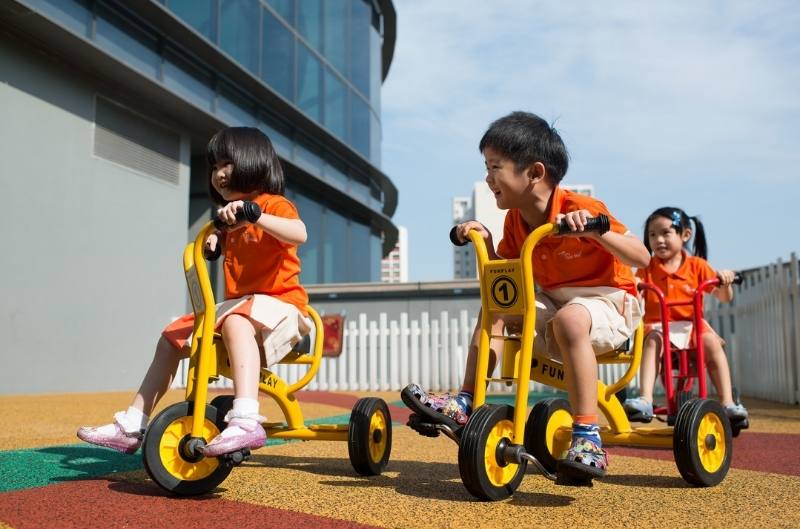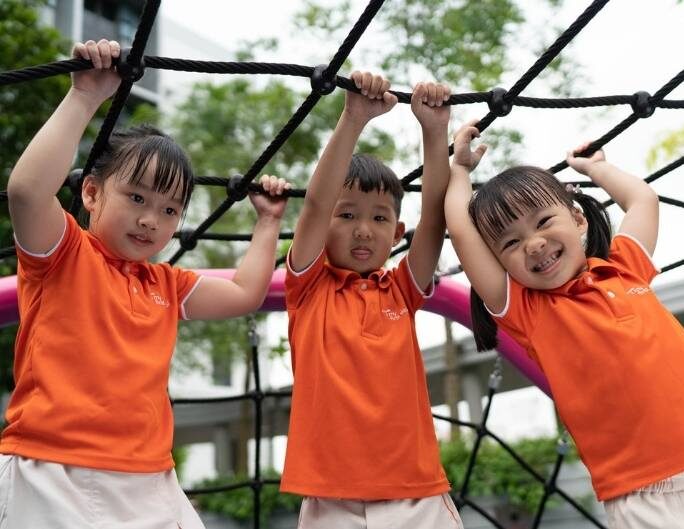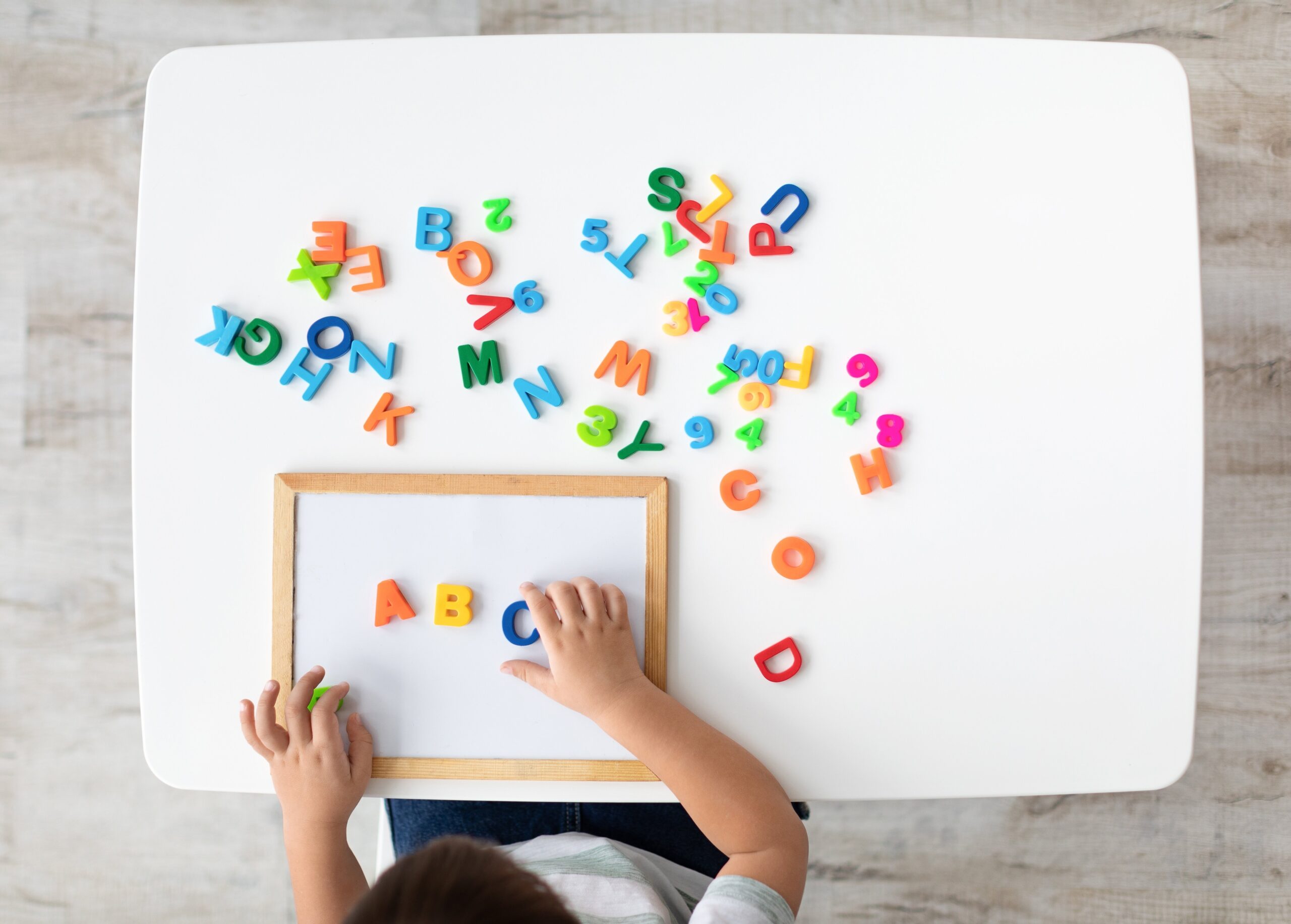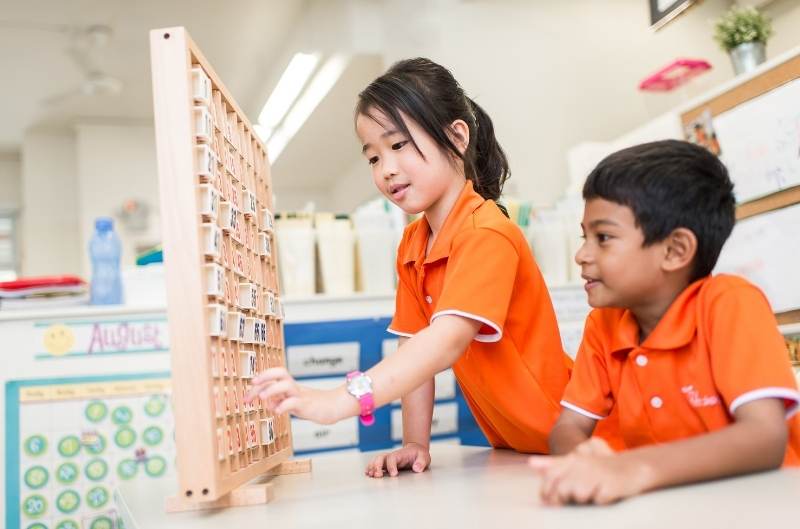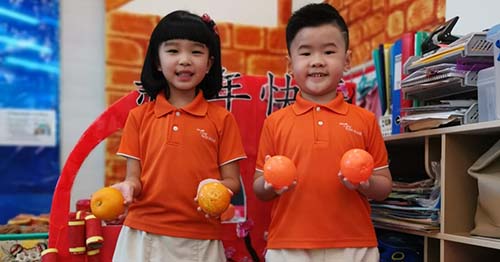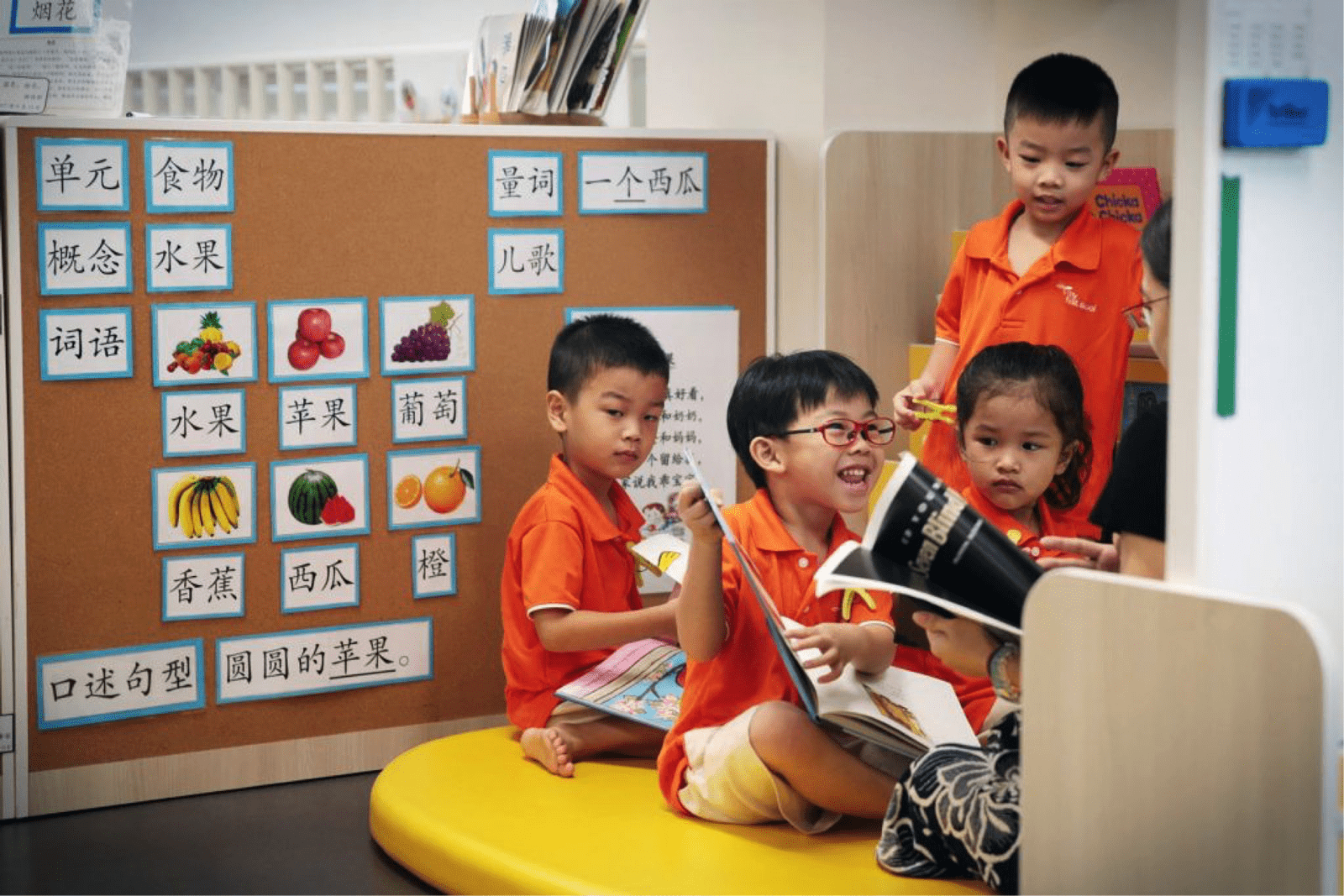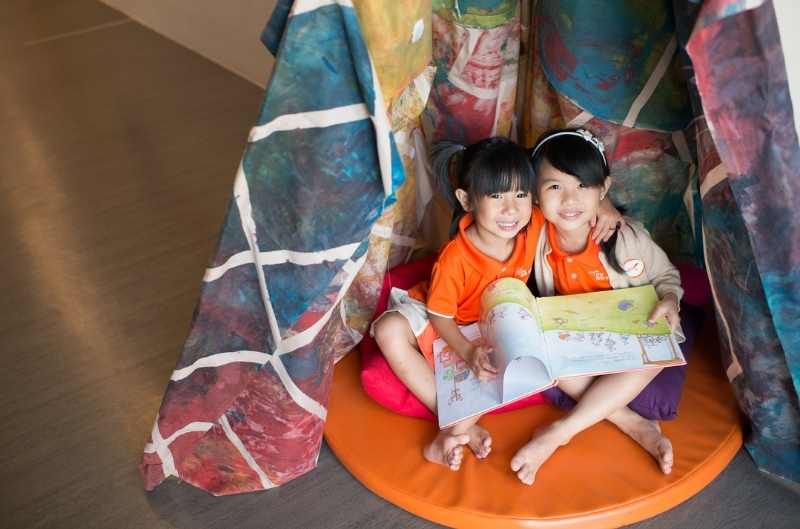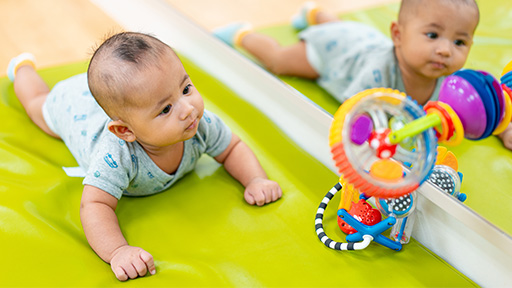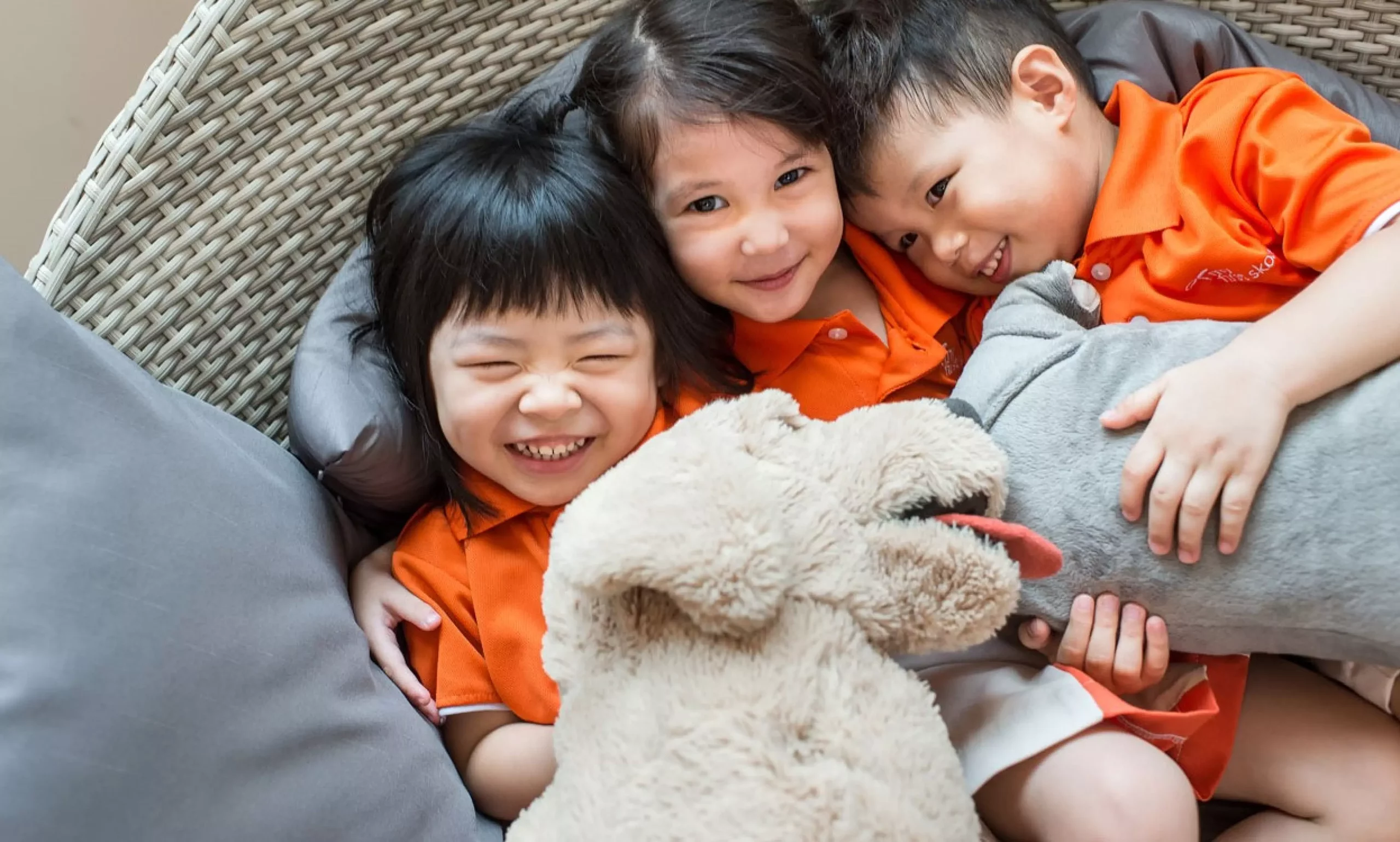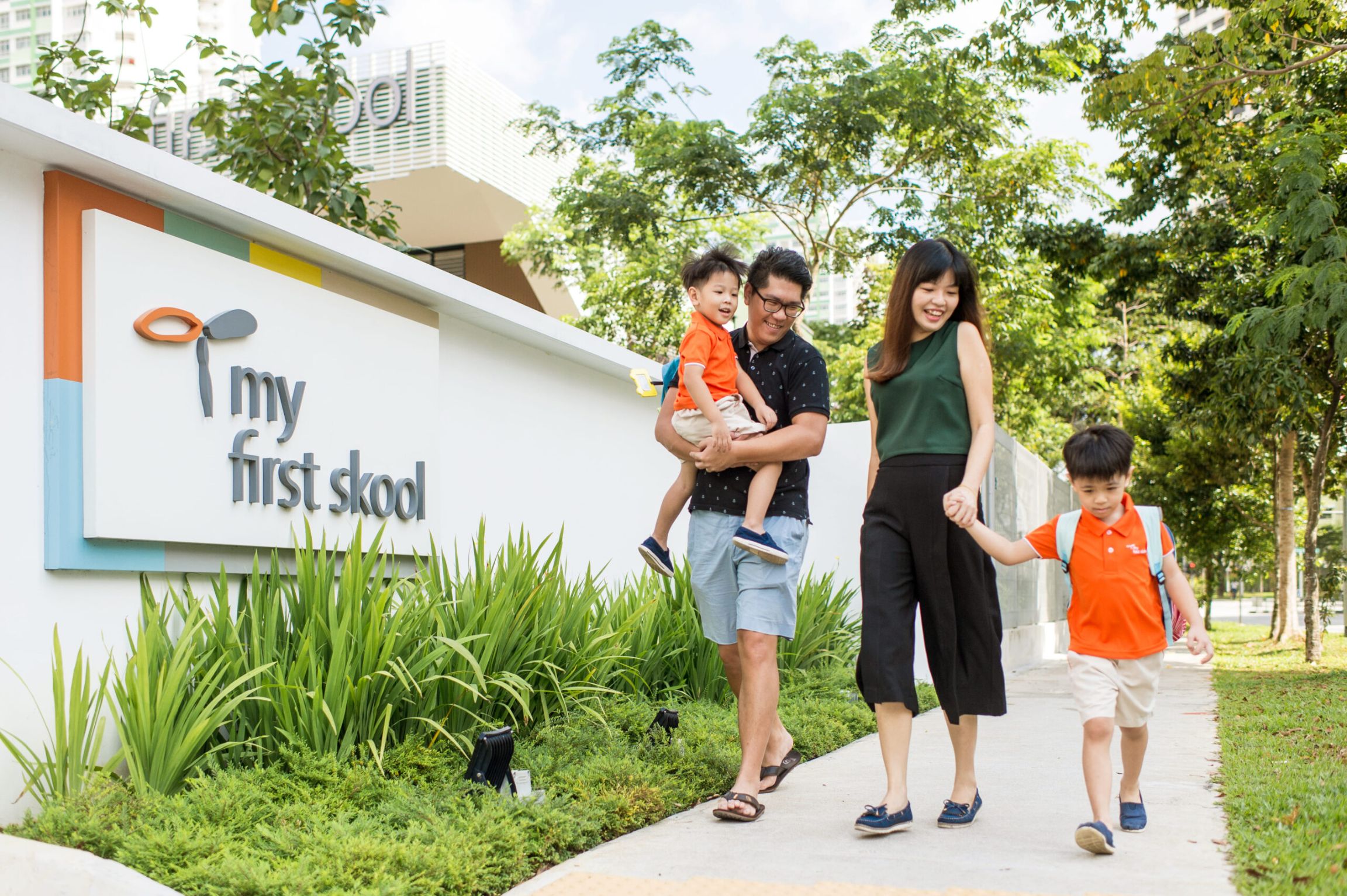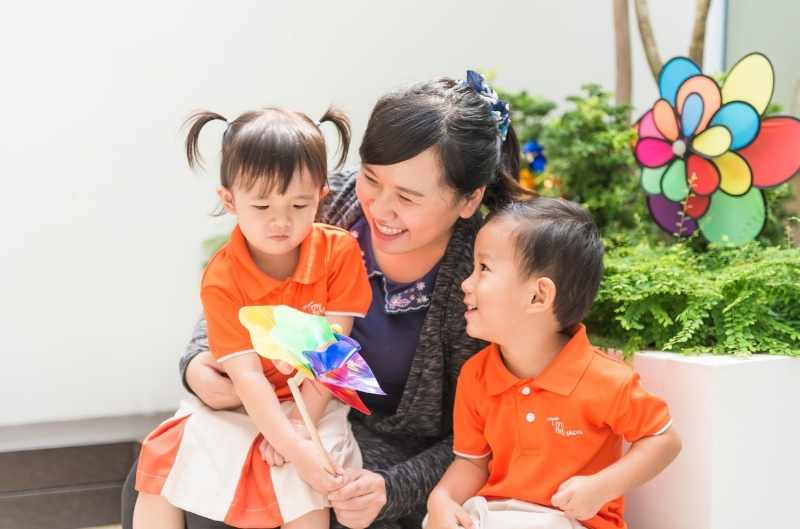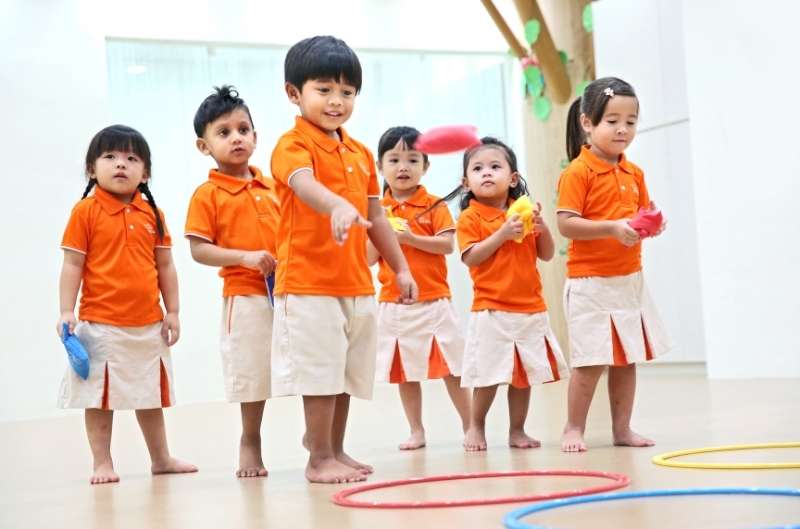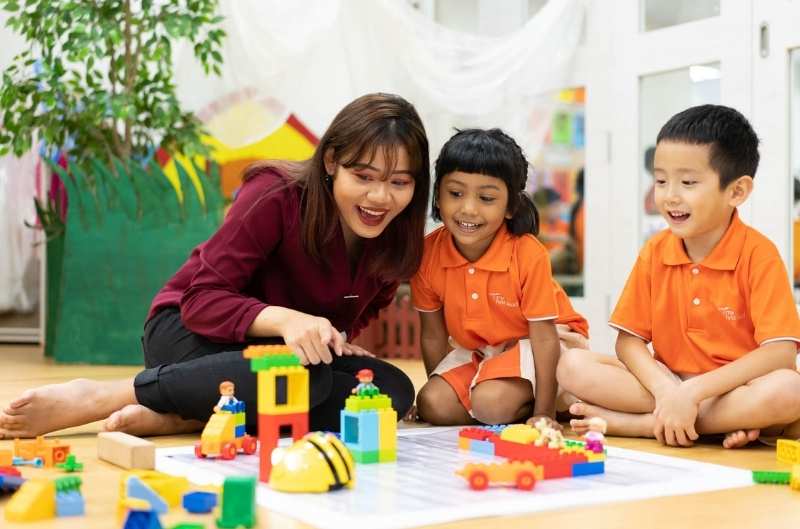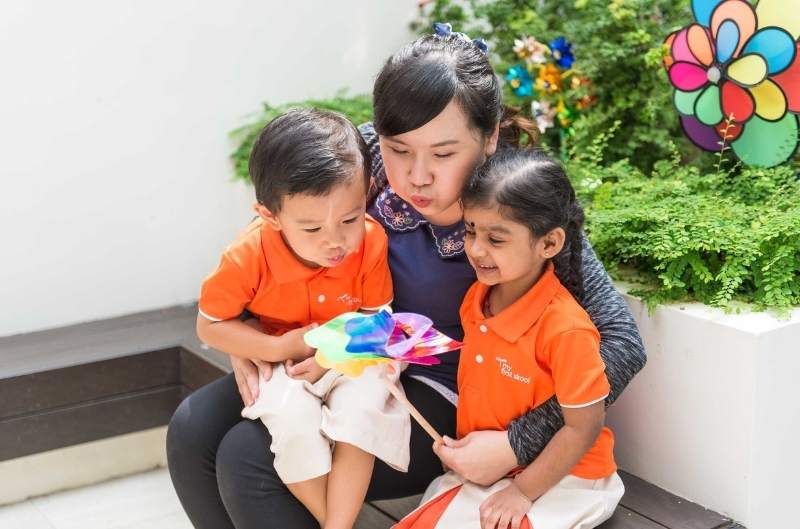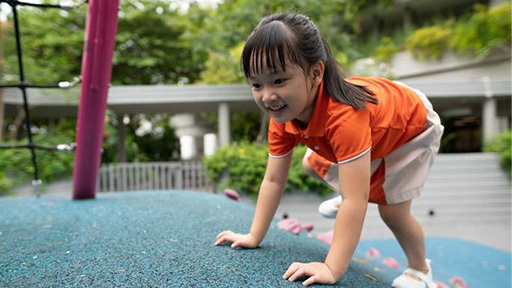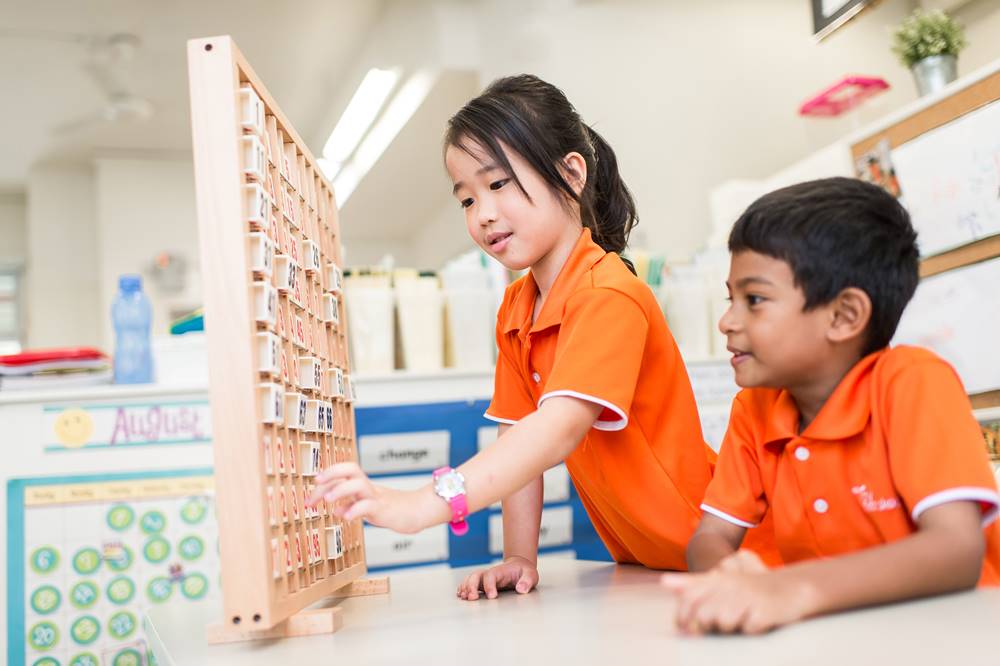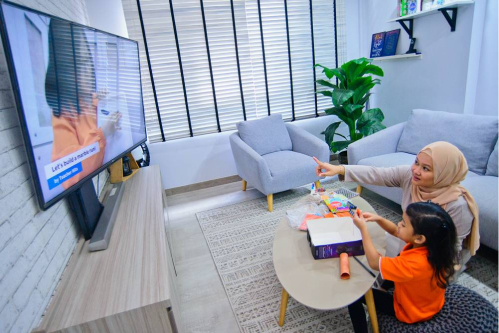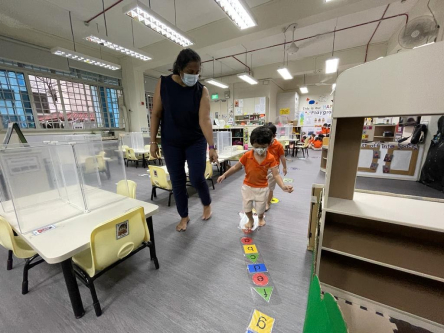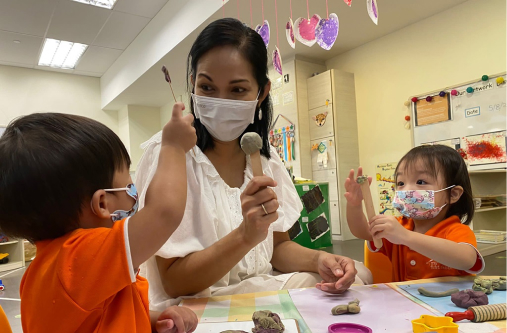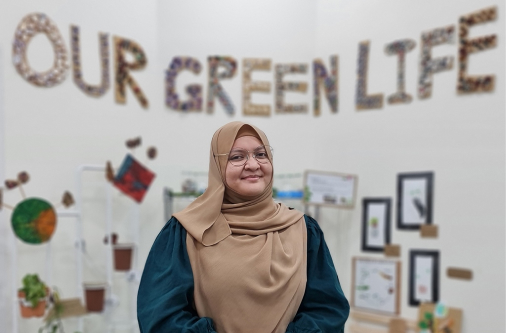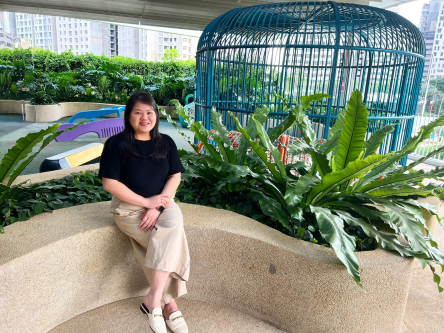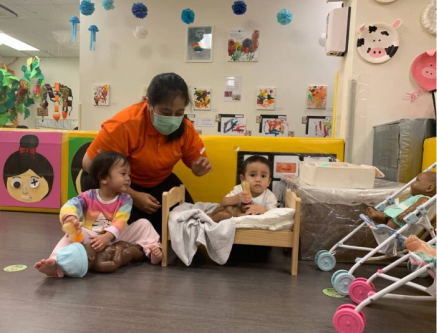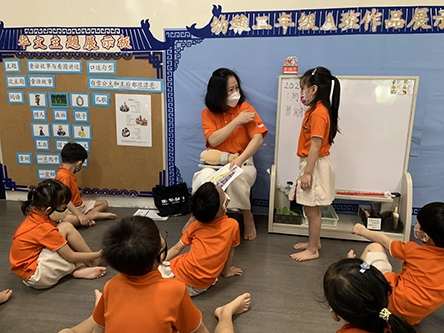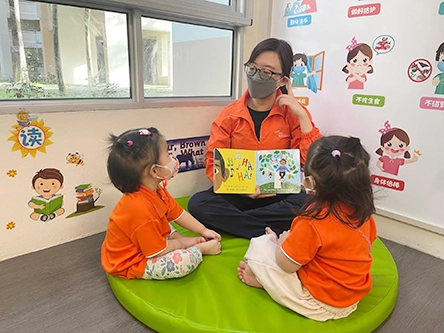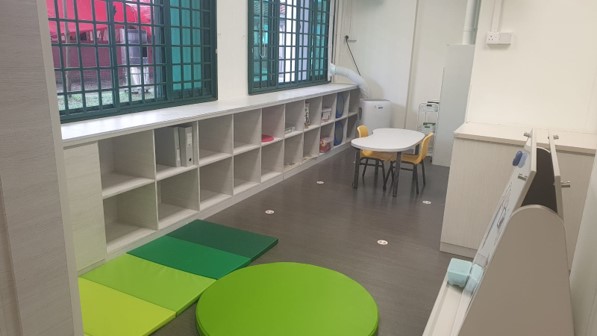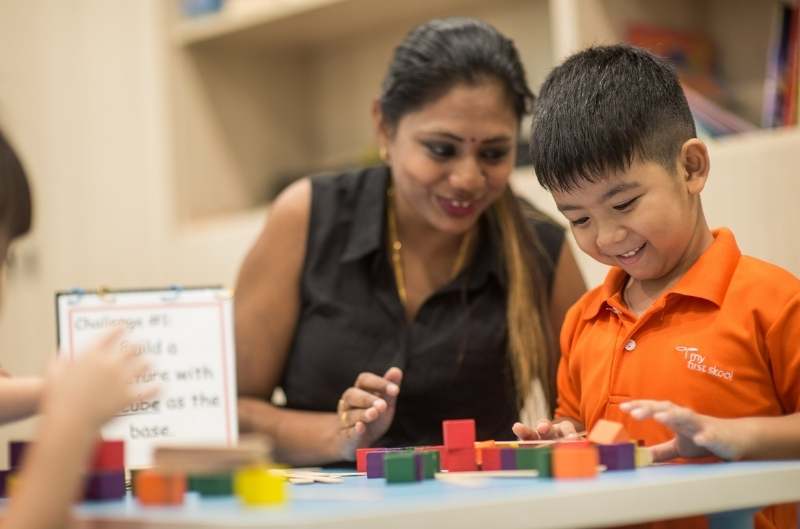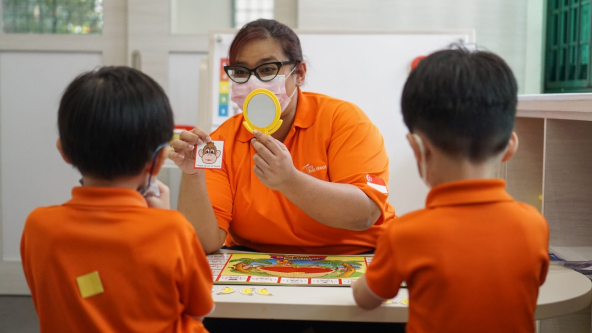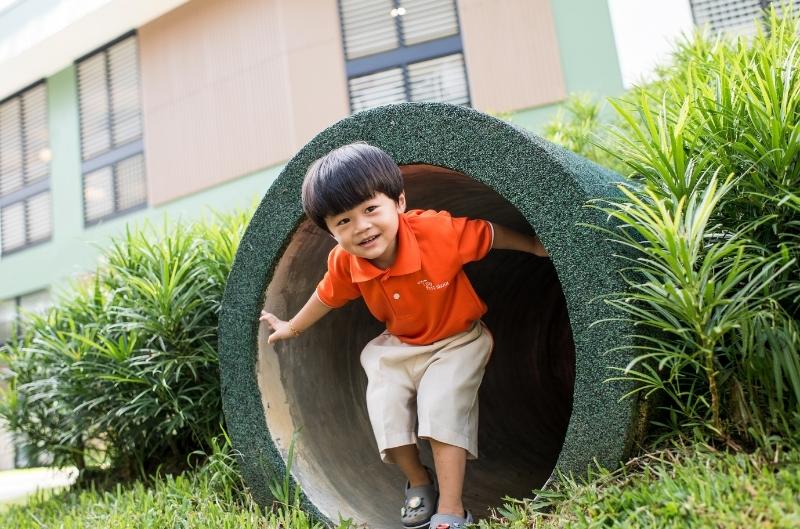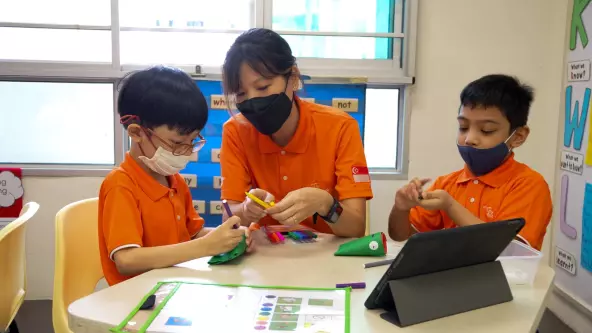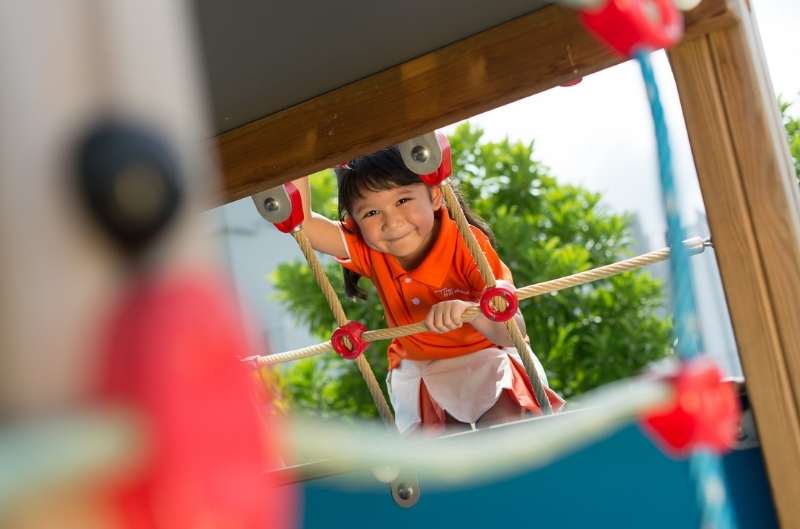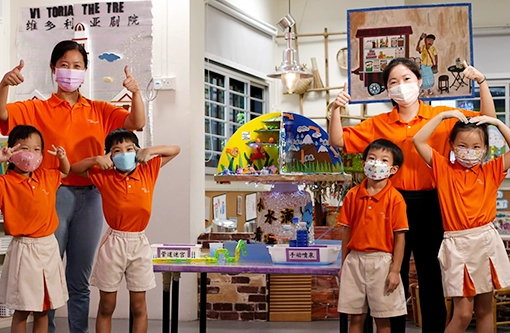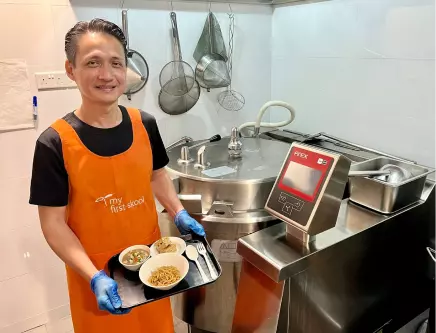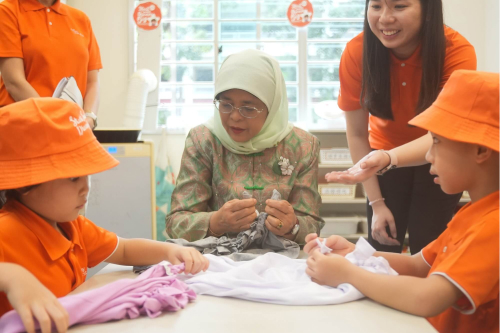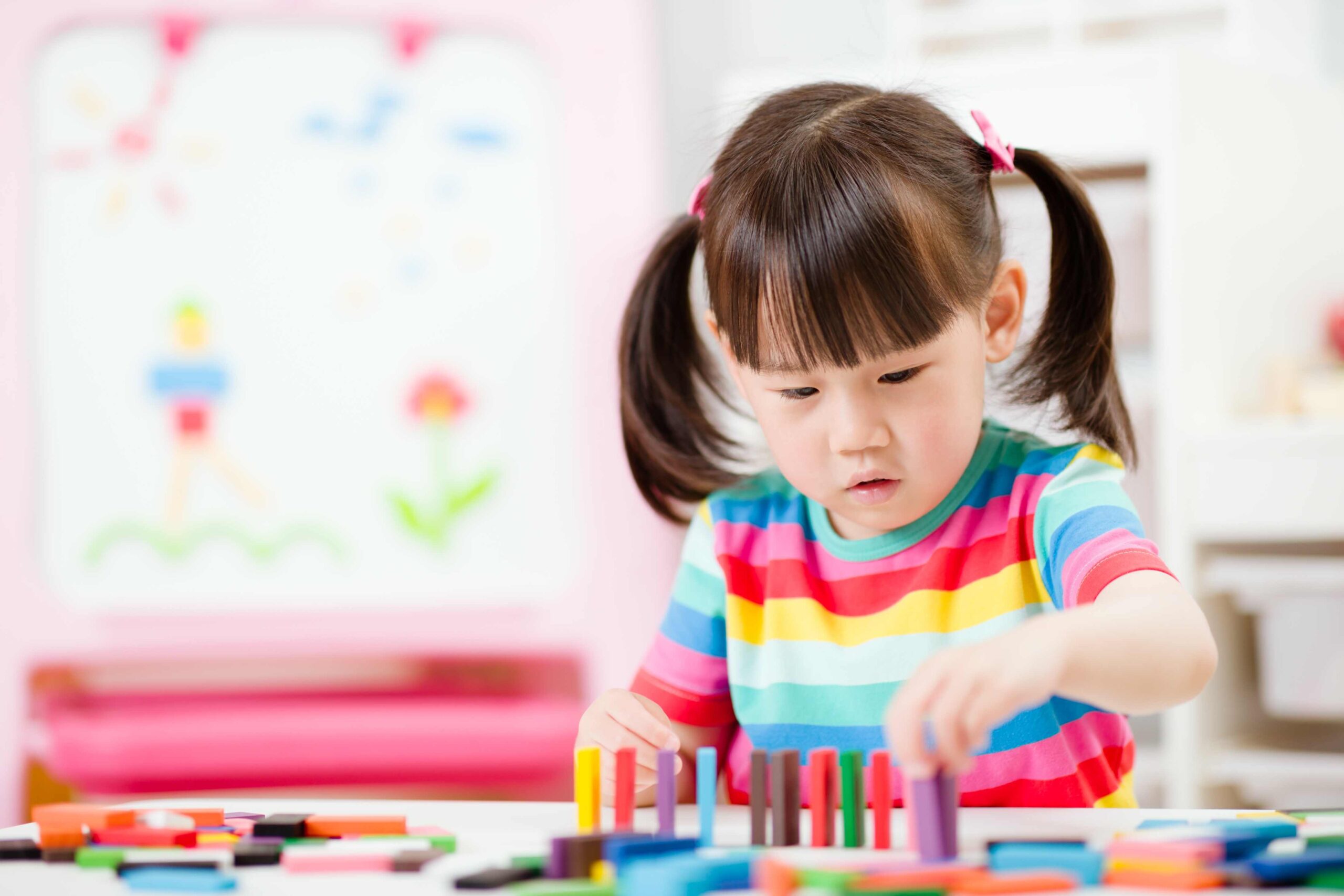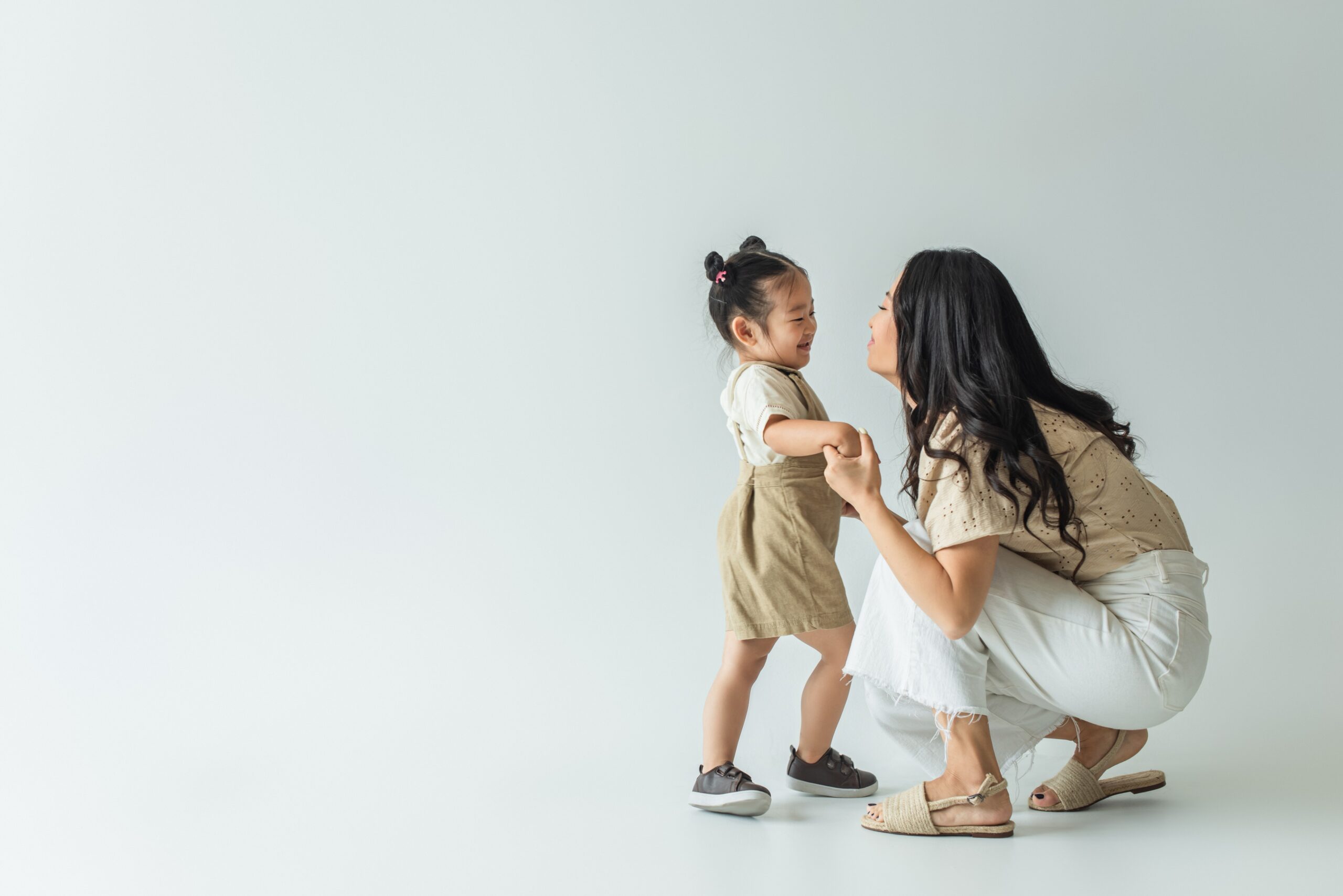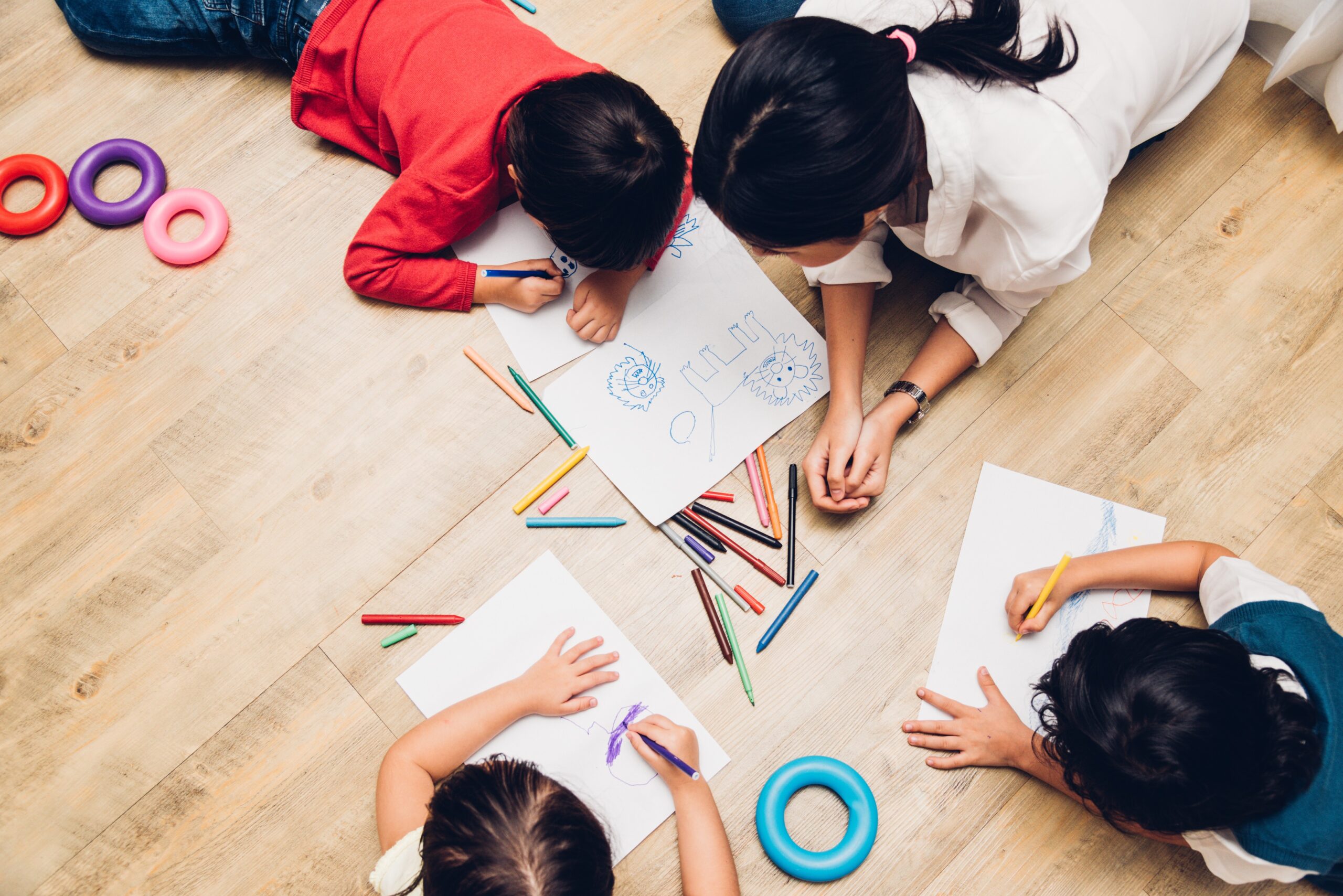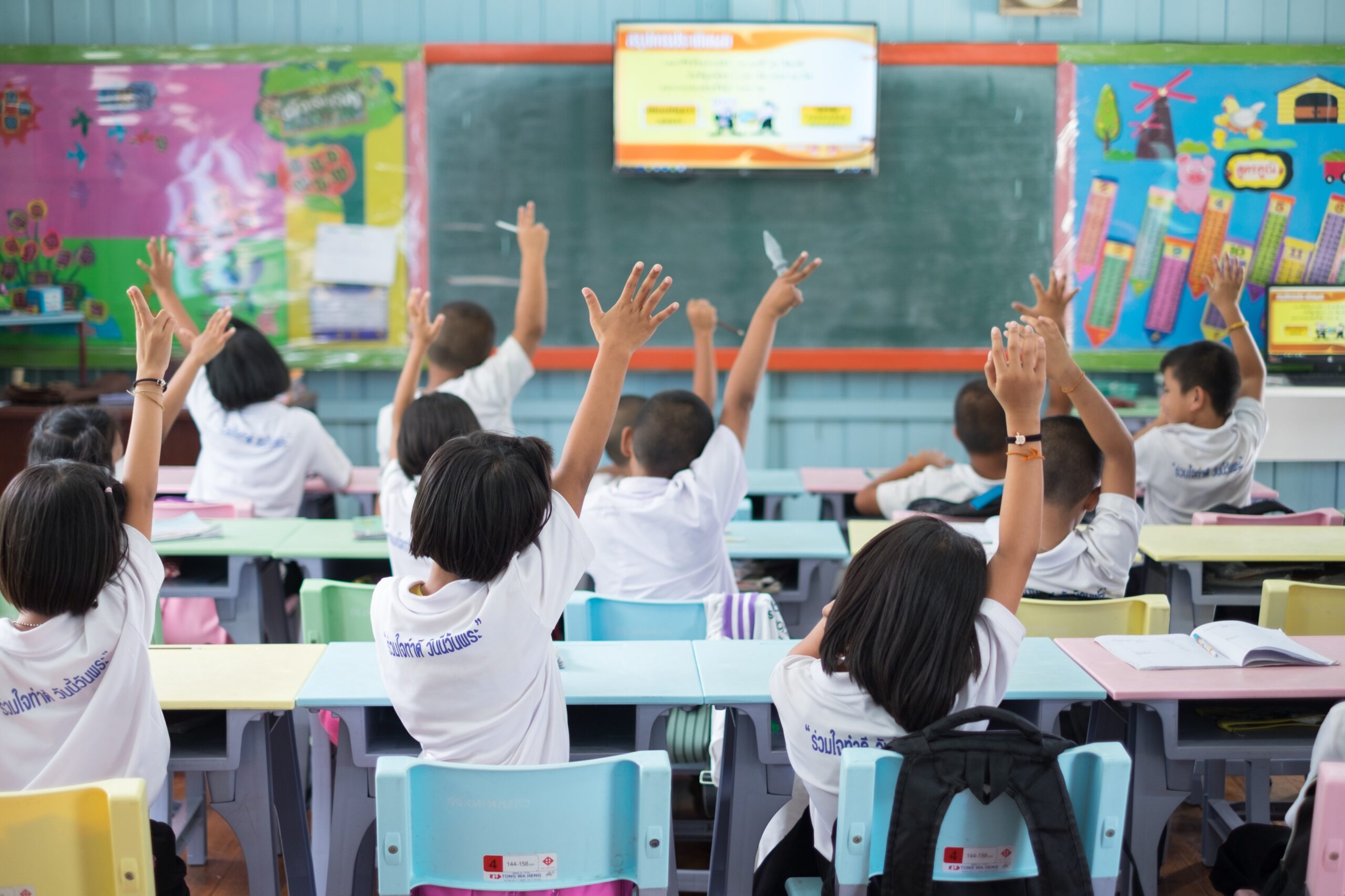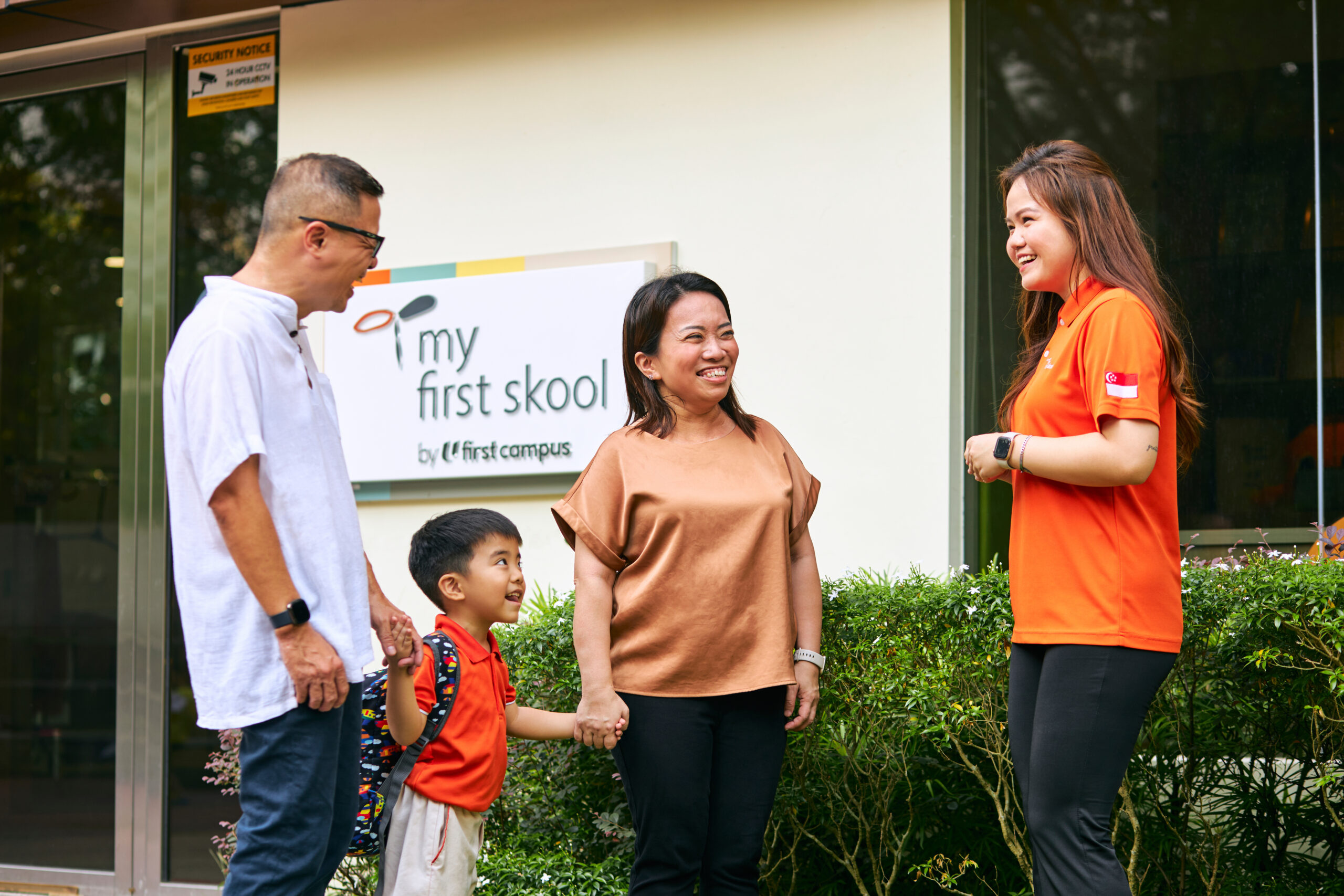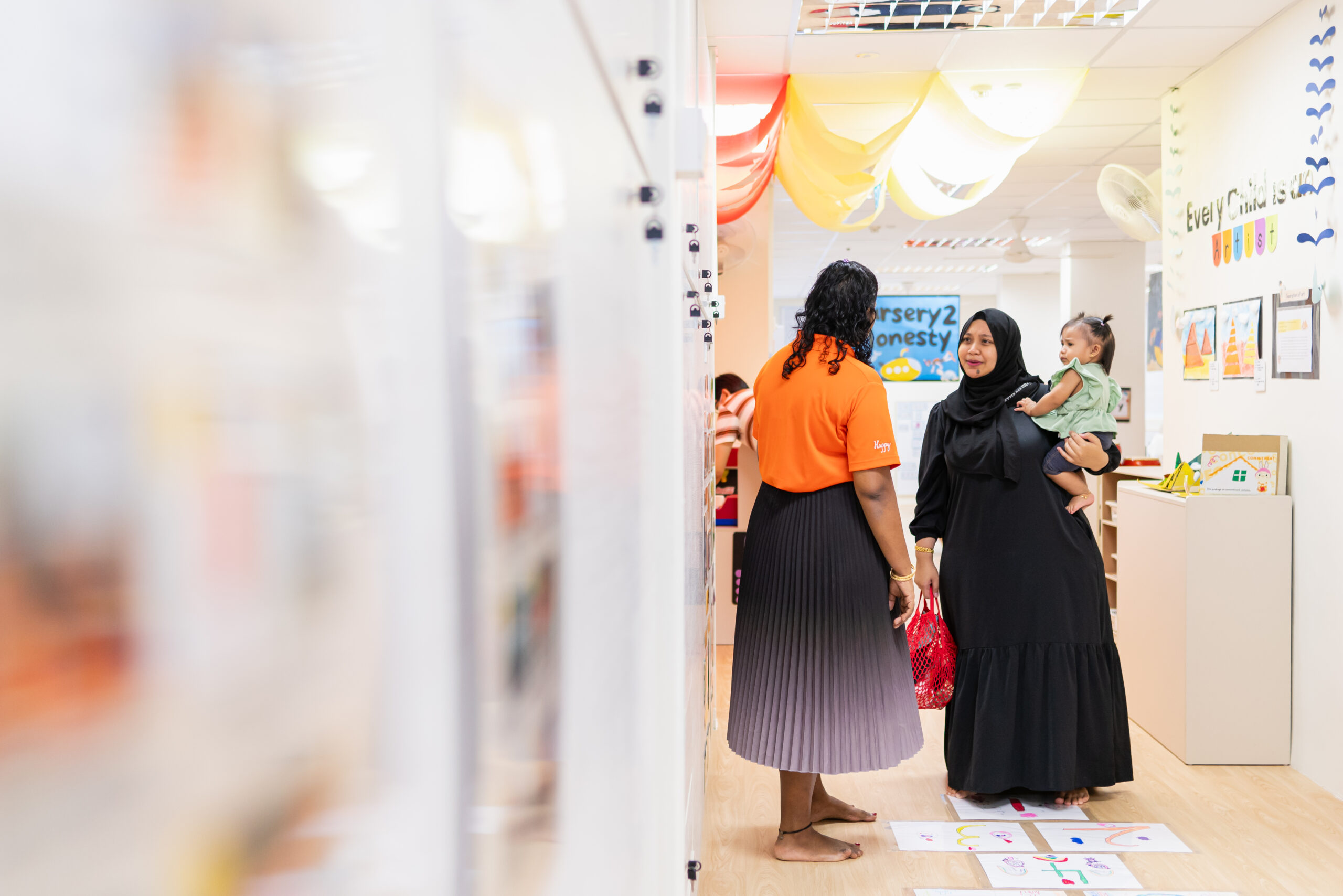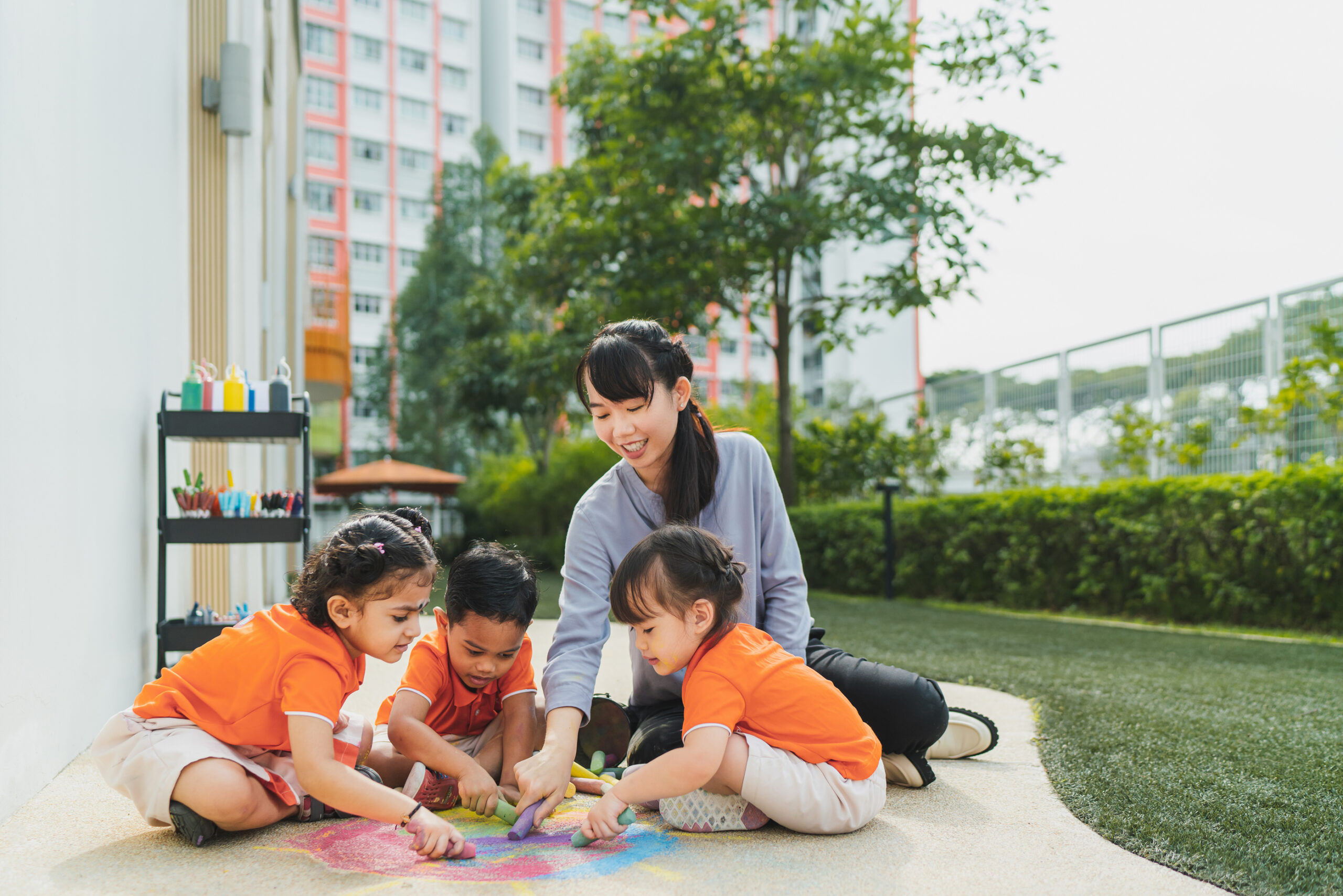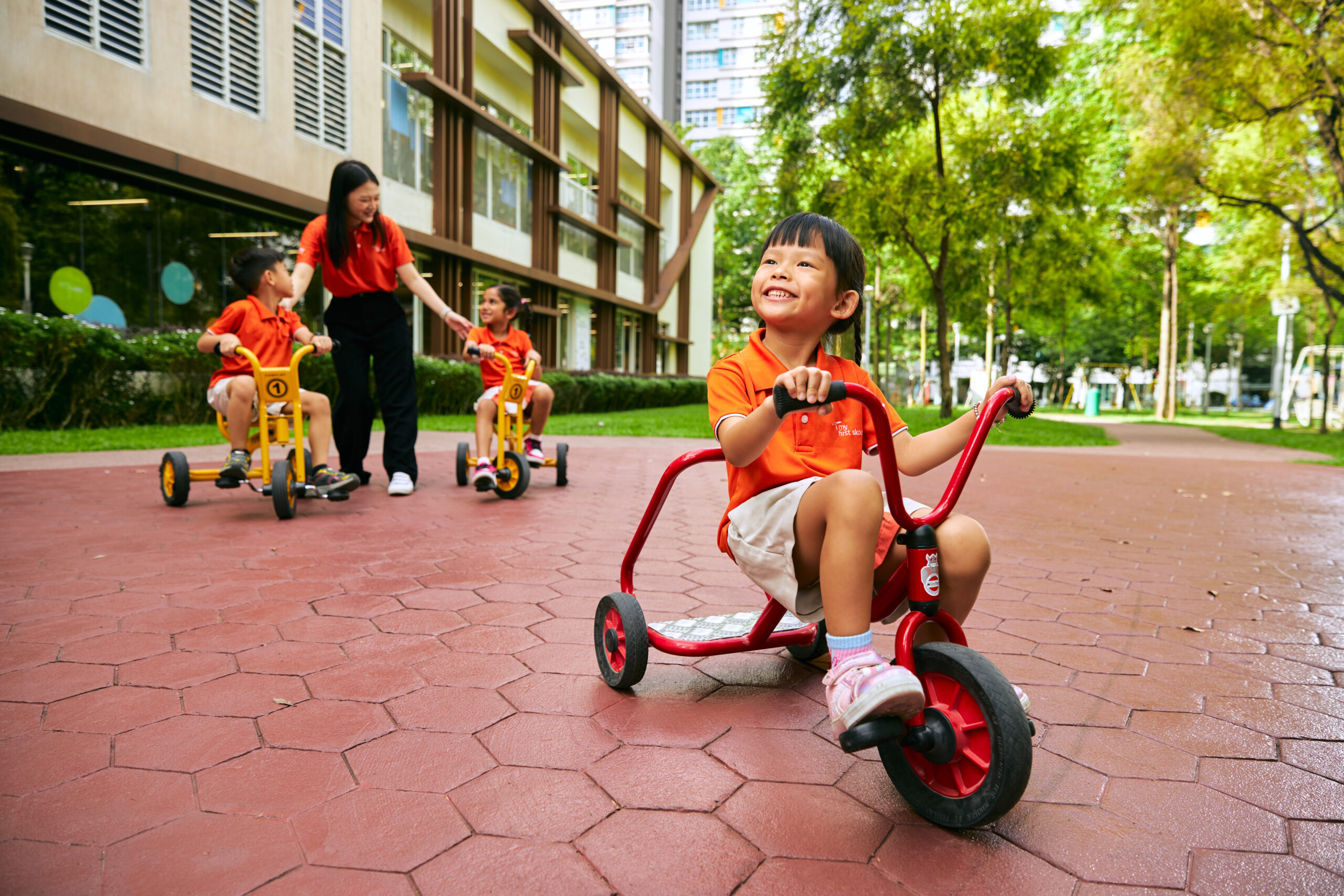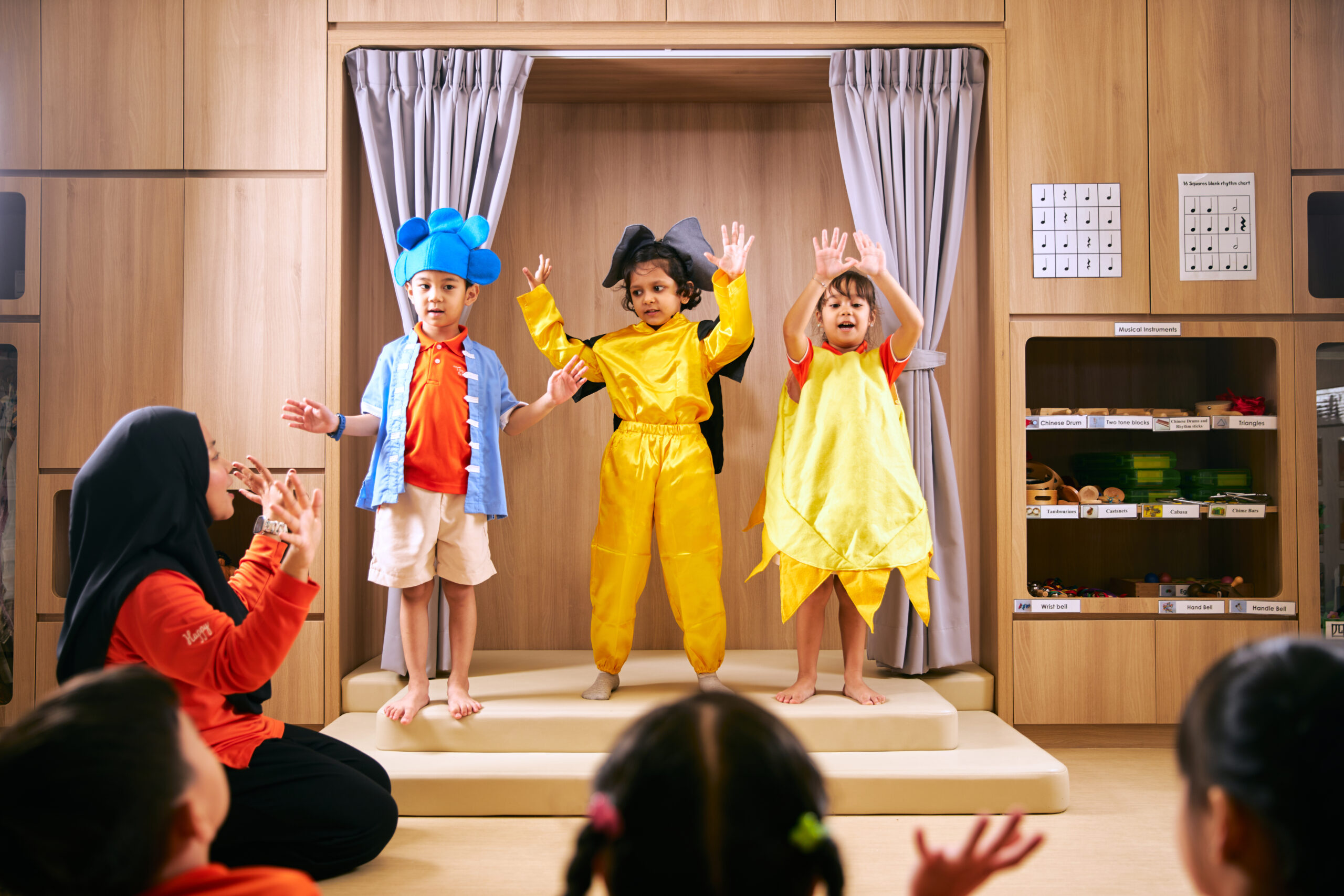How can we help?
Guide to Childcare Leave Singapore: Entitlements and Eligibility
Preschool
Singapore’s childcare leave policies support working parents in managing their work and family responsibilities. This article breaks down the different leave types, eligibility criteria, and application steps to help you navigate childcare leave in Singapore.
Key Takeaways
- In Singapore, eligible working parents are entitled to various forms of childcare leave, including Government Paid Childcare Leave (GPCL) and Extended Childcare Leave (ECL), each with specific criteria for eligibility.
- GPCL offers six days of paid leave per year for parents of Singapore citizen children under seven years old, providing financial support to both parents and employers, while ECL provides two days of leave for parents of children aged seven to twelve.
- Utilising childcare leave significantly enhances work-life balance for parents, allowing them to care for their children and spend quality time with them, and ultimately strengthens familial relationships and productivity upon return to work.
Understanding Childcare Leave in Singapore
The provision of childcare leave in Singapore serves as a crucial aid for employed parents to balance their work and family duties effectively. In alignment with the Employment Act, eligible working parents can avail themselves of childcare leave or an extended childcare leave on an annual basis. The motive behind this is to enable parents to dedicate time off from their professional roles specifically for the well-being and growth of their children during key formative years.
Childcare leave aims to create a workplace atmosphere that is sympathetic to familial needs, allowing parents the opportunity to spend time with their children without having to make use of their annual leave entitlement. This support extends to both employed and self-employed parents, as well as adoptive parents, foster parents, step-parents and legal guardians, granting wide-ranging access to various working parent demographics.
Utilizing this allocated childcare time gives room for managing health-related activities such as doctor visits or vaccinations, attending to children promptly during childhood illnesses, or simply engaging in essential quality bonding experiences. This fosters harmony between personal responsibilities and professional commitments while reinforcing family connections.
Types of Childcare Leave and Eligibility Criteria
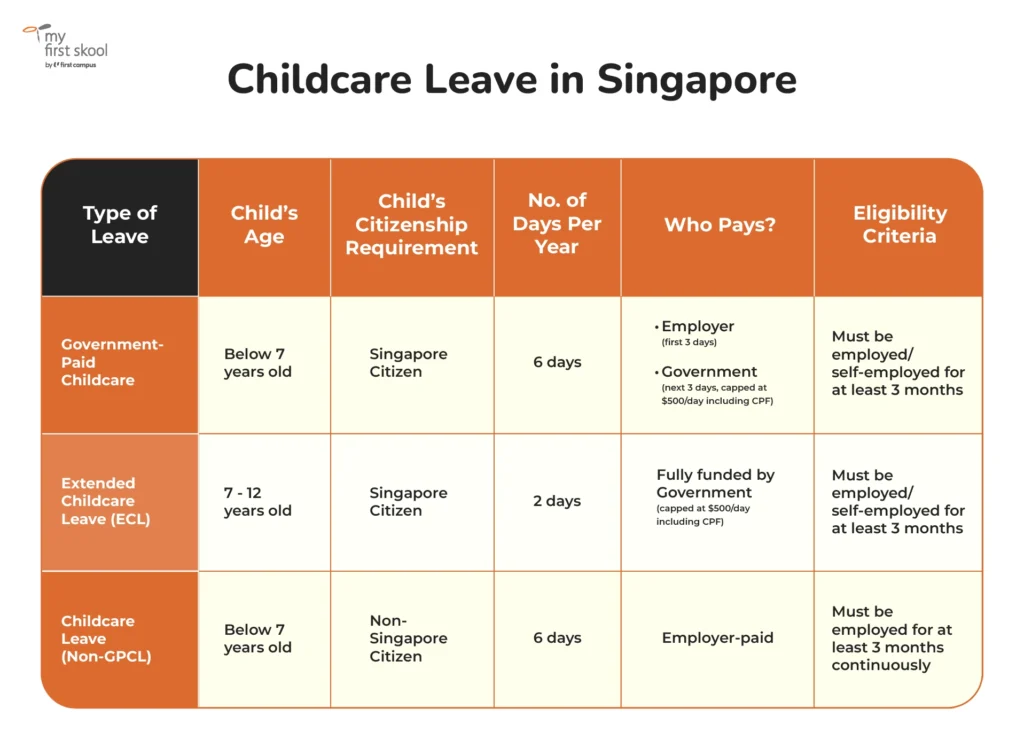
In Singapore, various childcare leave options are provided for working parents, each with specific qualifying conditions.
Government-Paid Childcare Leave (GPCL):
This is the most prevalent form of childcare leave for working parents. To be eligible for GPCL, the child must be a Singapore citizen and be younger than seven years old. The parent should have worked for their employer or have been self-employed for at least 3 consecutive months. Eligible parents can avail themselves of up to 6 days of GPCL within each calendar year.
Extended Childcare Leave (ECL)
ECL caters to parents whose children are Singapore citizens aged between seven and twelve years old. The requirements mirror those of GPCL: the parent needs to have completed at least 3 consecutive months of employment or self-employment before applying. Eligible working parents can enjoy 2 days of leave per year.
Childcare Leave (non-GPCL)
Where your child is below 7 years old but is not a Singapore Citizen, you may be entitled to 2 days of childcare leave under the Employment Act if you have worked for your employer for a continuous period of at least 3 months.
Government Paid Childcare Leave (GPCL) Entitlement
The Government-Paid Childcare Leave (GPCL) Scheme provides essential support to employees with young Singaporean children, helping working parents and their employers manage childcare responsibilities. Each parent of a Singapore citizen child below the age of 7 is eligible for 6 days of GPCL each year, provided they have been employed or self-employed continuously for at least 3 months prior to taking leave. Regardless of how many children they have, both parents can utilise 6 days annually.
Eligible part-time employees will also receive pro-rated GPCL benefits based on their work hours, subject to a guaranteed minimum entitlement of 2 days of leave each year.
It’s important for employees to remember that this paid childcare leave must be utilized within the same calendar year. It cannot roll over into subsequent years. Both parents together may claim up to 42 days throughout their child’s early years under this initiative – providing significant support as families balance parental care and employment commitments.
Extended Childcare Leave (ECL) Entitlement
Eligible working parents with children aged 7 to 12 are entitled to 2 days of ECL per calendar year. To qualify, the child must be a Singapore citizen and the parent must have been employed continuously for at least 3 months by their employer.
For parents who have been self-employed continuously for at least 3 months and can show evidence of lost income from ceasing to be actively engaged during their ECL period, ECL is also available. This ensures that all eligible working parents have access to additional childcare support regardless of employment type.
Eligible part-time employees are also considered under this initiative. They too can claim 2 days of extended childcare leave adjusted in accordance with their respective work schedules. By doing so, it provides an opportunity for all qualifying working parents to utilise the benefits offered through ECL.
How to Apply for Childcare Leave
To apply for childcare leave, it is essential to communicate promptly and comply with the policies set forth by one’s employer. Employees are encouraged to notify their employers about their plans to take childcare leave as soon as possible in order to verify eligibility and make alternative workplace arrangements accordingly.
Employees should then apply for GPCL/ ECL according to their employers’ leave application procedures. This usually involves submitting the declaration form (GPCL1) with all necessary supporting documents, but employers may use their own declaration form or system.
Employers may request various documents including a child’s birth certificate or proof of citizenship for verification purposes. In cases where individuals are foster parents or legal guardians, they might be asked for additional documentation such as a Letter of Identity (to prove that a foster child has been placed under your care under the Children and Young Persons Act) or a Legal Guardianship document.
It is critical that employees follow the designated application procedure outlined by their company, which could entail utilizing an HR system or filling out paper forms, guaranteeing accurate recording of the leave period and timely submission of all necessary paperwork.
For those who are self-employed, keeping track of childcare leave dates is crucial. Claims should then be filed through the Government-Paid Leave Portal within 3 months following the end date of that calendar year. Self-employed persons can monitor their claim status via this portal and will receive a notification when processing is complete.
Benefits of Utilising Childcare Leave and its Impact on Work-Life Balance
Taking advantage of childcare leave brings about several advantages that serve to improve work-life balance for working parents. The Singapore government has instituted schemes such as GPCL and ECL in an effort to foster a workplace culture supportive of families. These measures play a crucial role in preserving workforce stability by allowing for integration with familial obligations.
As working parents often need to entrust their young children to caregivers when they are at work, it’s encouraged for them to make full use of their childcare leave entitlements to spend quality time with their children and be present with them. Childcare leave provides parents with vital opportunities to deepen the emotional connection with their offspring, participate actively in significant family occasions, and look after their kids during times of sickness or medical needs. Such practices contribute to nurturing an environment where employees can attend to their job duties alongside parenting roles. This leads to fortified bonds within the family unit and promotes healthier emotional growth among children.
Studies have demonstrated that having access to childcare leave alleviates parental stress, which increases productivity upon returning back to work. Ultimately, achieving work-life balance involves both making full use of available childcare leave entitlements and having proficient time management skills — this will ensure that parents can provide the necessary attention to their children while simultaneously upholding career commitments.
My First Skool: Committed to Supporting Working Parents
We know how important it is for working parents to be able to have a trusted support system for their preschooler’s care. At My First Skool, all our centres are staffed with trusted, passionate teachers who are professionally trained in early childhood education and are driven by a single passion – to help your child be the best that they can be.
With over 40 years of expertise in child development, My First Skool ensures that our curriculum stays current with the latest developments in early childhood to equip children at that stage in their development with the right skills and mindset to thrive in this ever-changing world. We recognise that children are unique individuals. They explore their environment, form opinions, and want to be heard. As such, we centre our curriculum around relationships, forging close bonds, and building genuine connections with the children and parents. Learn how our relationships-based approach can support your child’s holistic development while you manage work-life balance.
160+ Locations Islandwide
Every year, over 26,000 families all across Singapore see their children benefit from our relationships-based curriculum – one that emphasises forging strong bonds between children, teachers and parents. Find a centre near you or take a virtual tour to explore our learning environments and learn how your child can thrive.
Summary
Grasping the significance of childcare leave benefits in Singapore is essential for working parents who aim to achieve a good balance between their professional and personal lives. These childcare leave benefits, which include Government-Paid Childcare Leave (GPCL) and Extended Childcare Leave (ECL), offer indispensable aid that empowers parents to devote time to nurturing and developing a strong connection with their children during their pivotal early years.
Taking full advantage of these childcare leave entitlements enables parents to deliver optimal care and support for their children while efficiently balancing work commitments. Seize these opportunities to foster a conducive environment where your family can flourish.
Frequently Asked Questions
What is the eligibility criteria for Government-Paid Childcare Leave (GPCL)?
To qualify for Government-Paid Childcare Leave (GPCL), your child must be a Singapore citizen under 7 years old, and you must have been employed or self-employed for at least 3 continuous months.
How many days of childcare leave can parents take under the GPCL scheme?
Under the GPCL scheme, parents can take six days of childcare leave per calendar year until their child turns seven years old.
How is Extended Childcare Leave (ECL) different from GPCL?
Extended Childcare Leave (ECL) differs from Government-Paid Childcare Leave (GPCL) in that ECL offers two days of leave per calendar year for parents of children aged 7 to 12 years, while GPCL provides six days of leave for parents of children under seven years old.
What documents are required when applying for childcare leave?
When applying for childcare leave, you typically need to submit a declaration form (GPCL1) with all necessary supporting documents. You usually will need to provide your child’s birth certificate or proof of citizenship. Additional documents may be required for foster parents or legal guardians, such as a Letter of Identity or Legal Guardianship document.
How can self-employed individuals apply for childcare leave?
Self-employed individuals can apply for childcare leave by recording their leave dates and submitting claims through the Government-Paid Leave Portal within three months after the last day of the calendar year. This ensures they receive the appropriate benefits for their childcare responsibilities.
